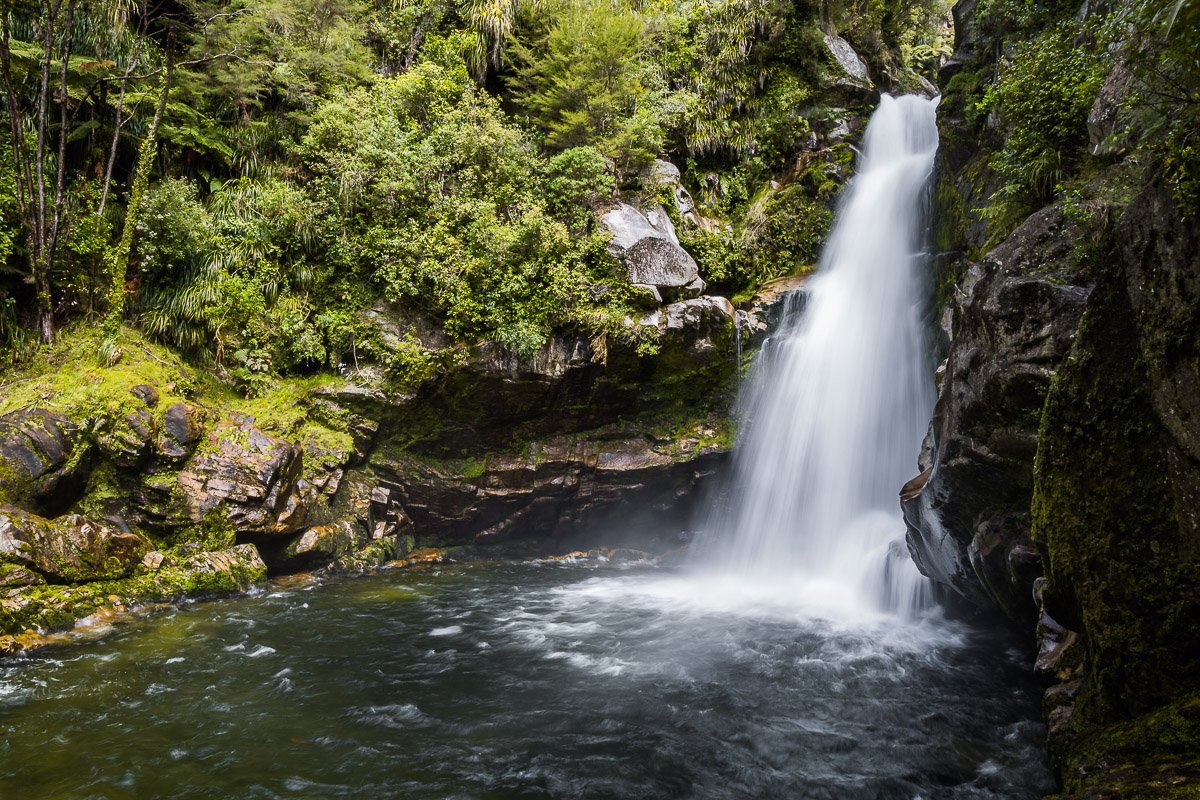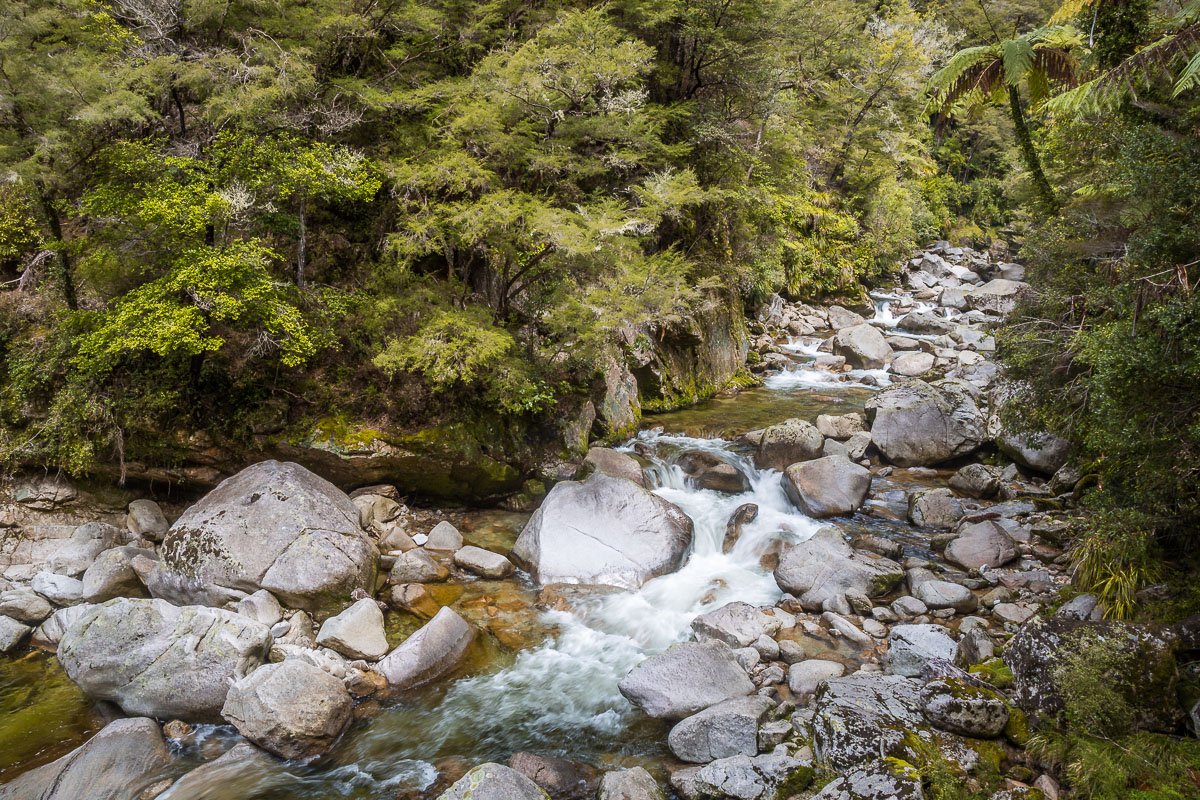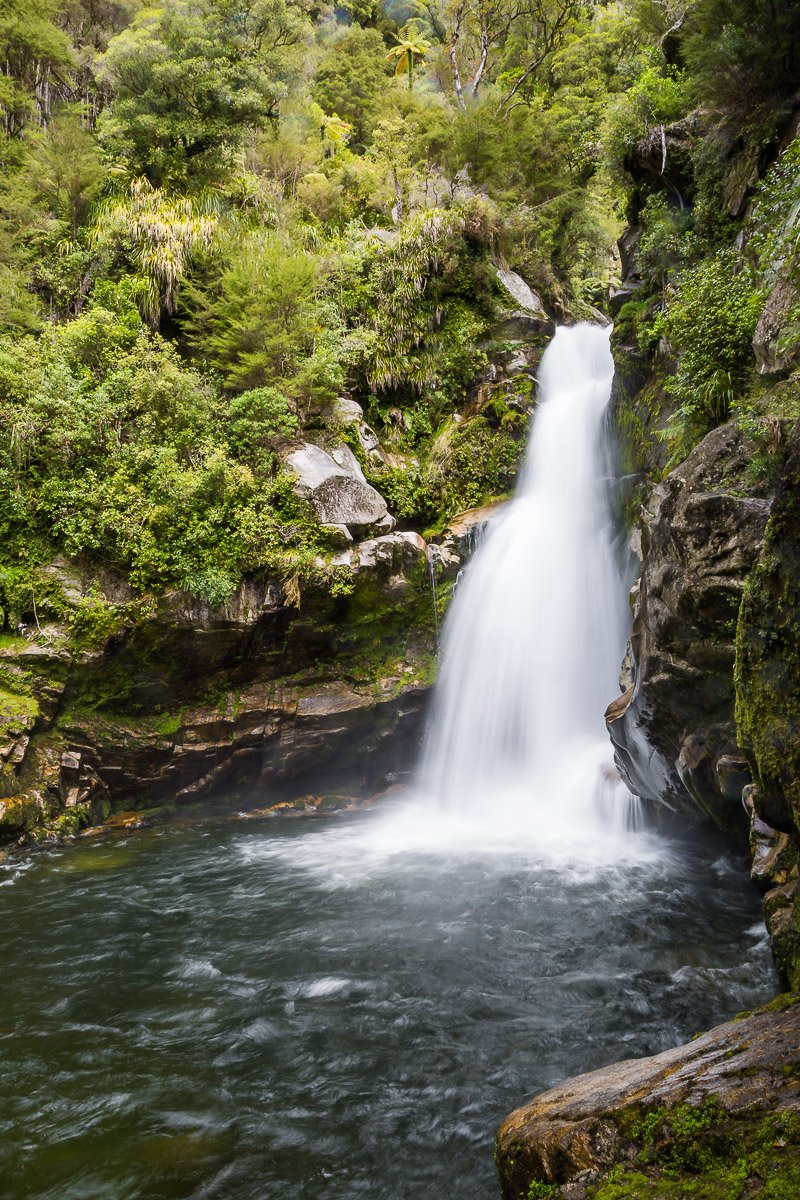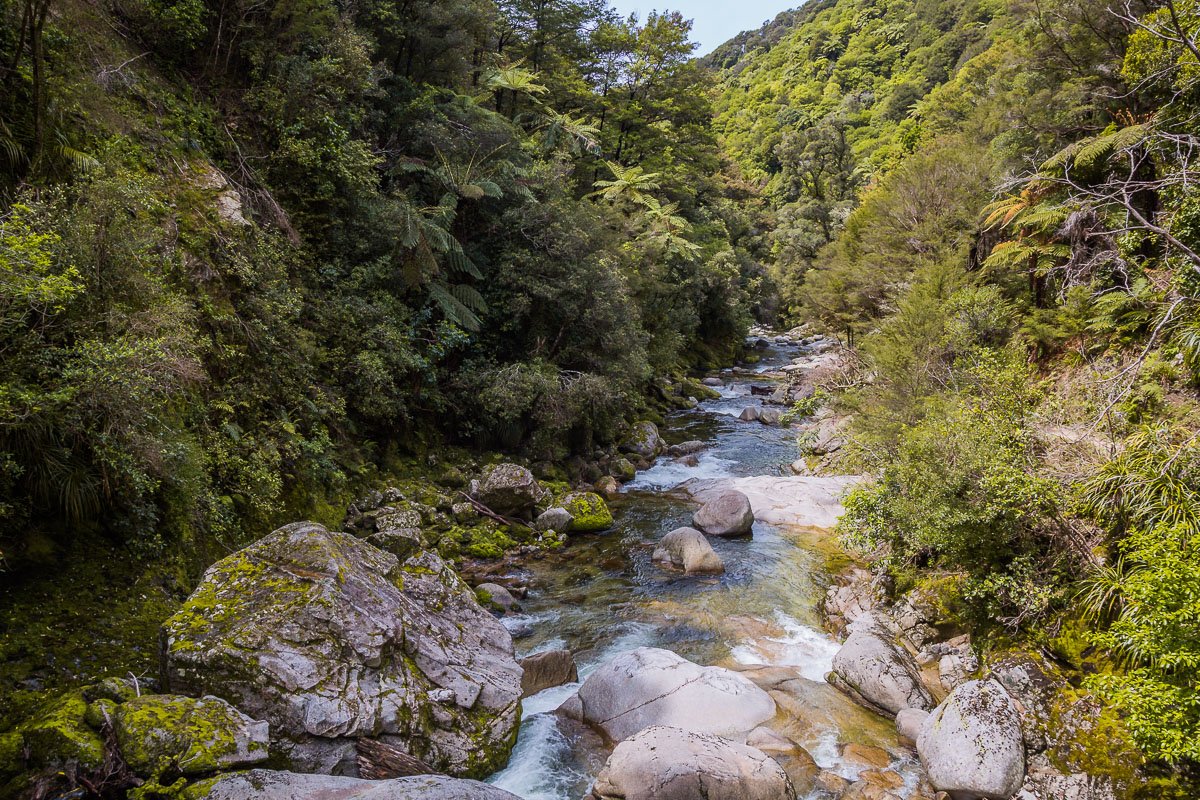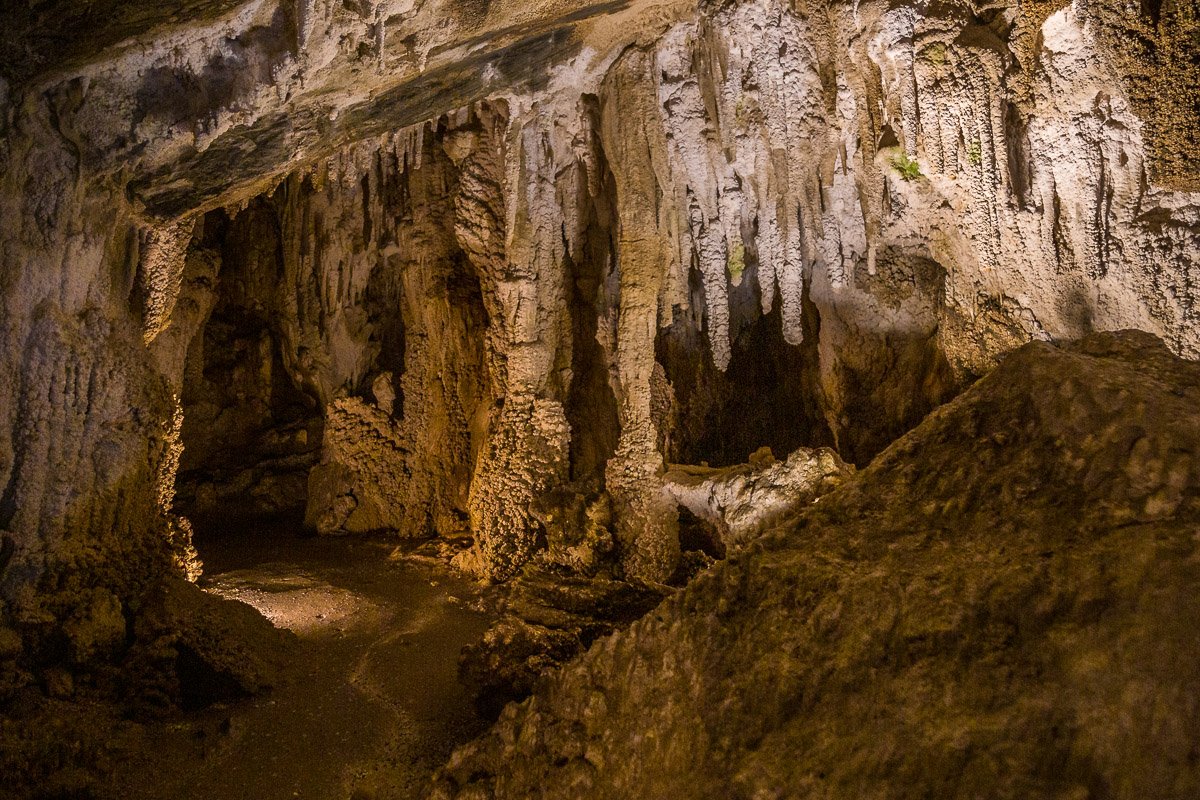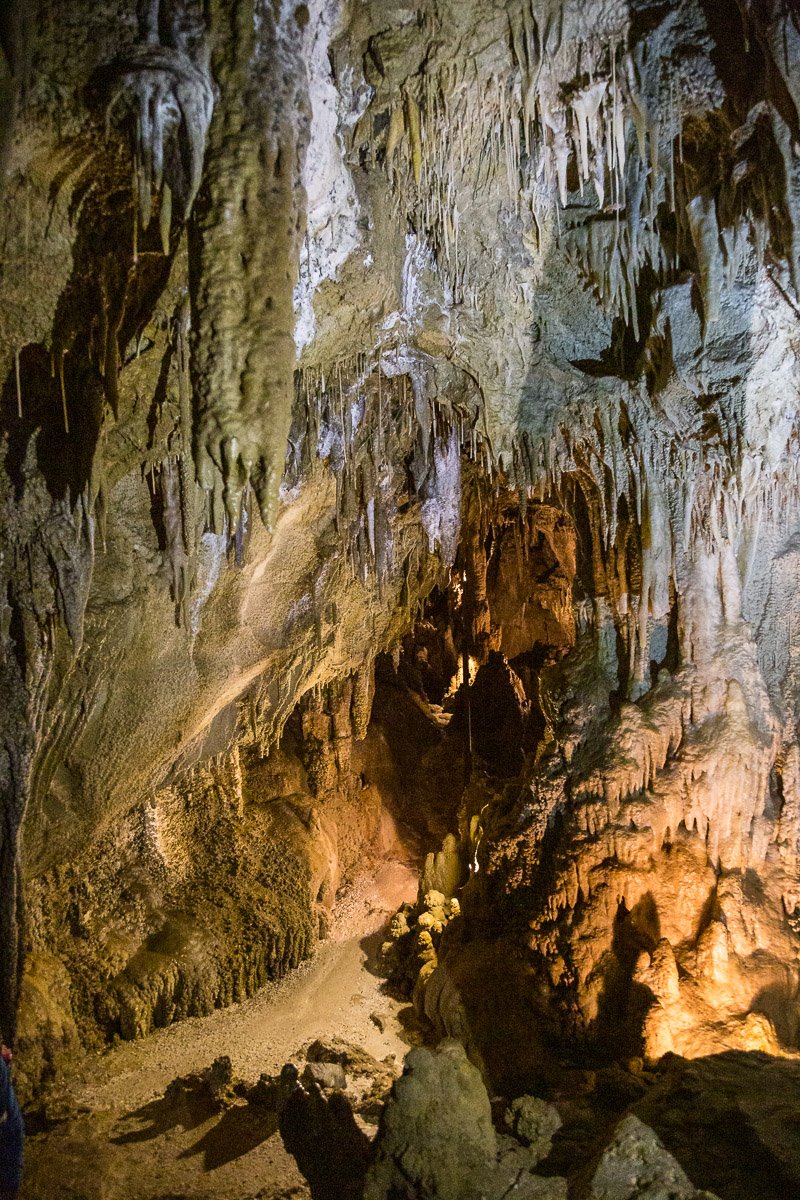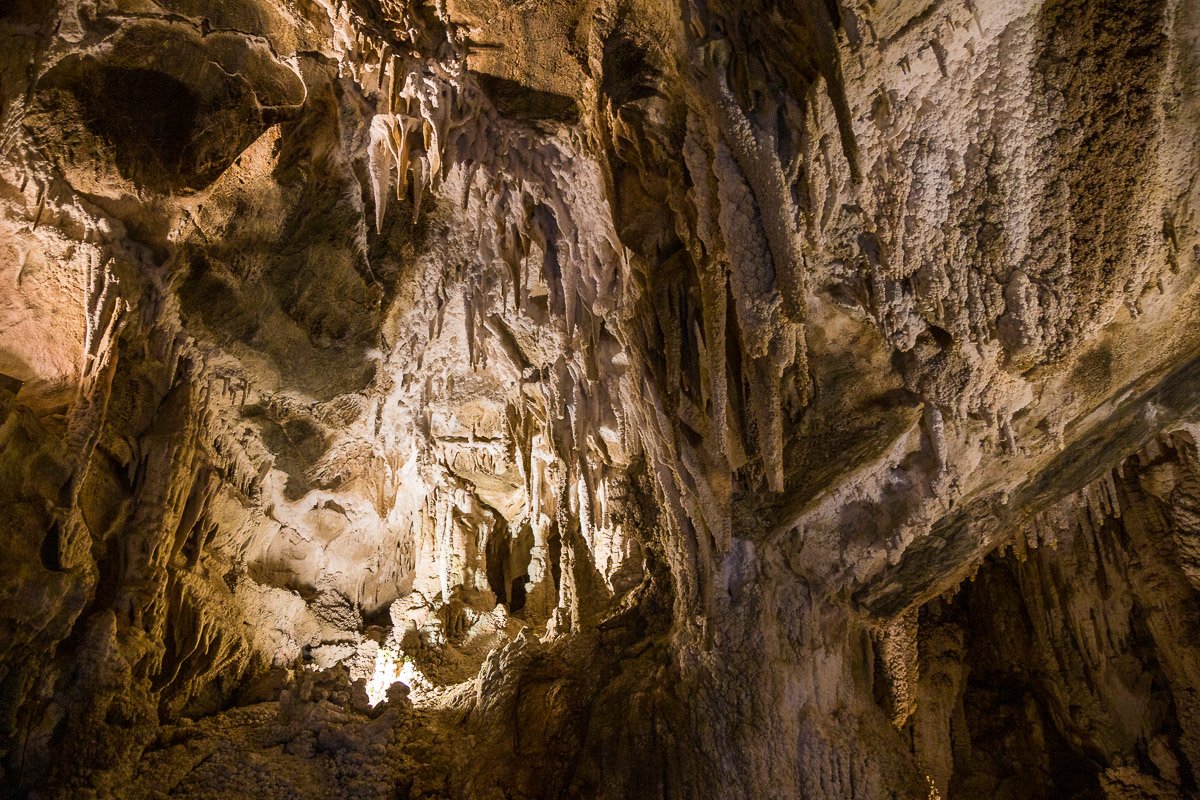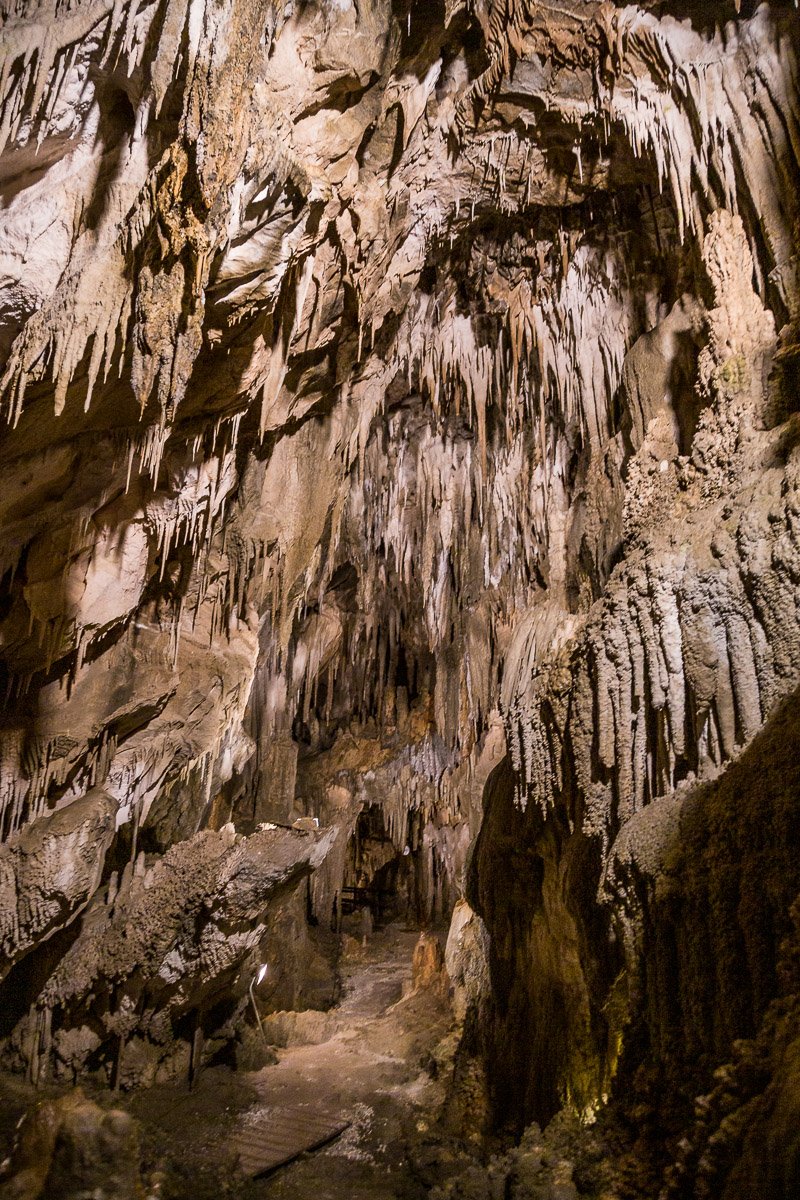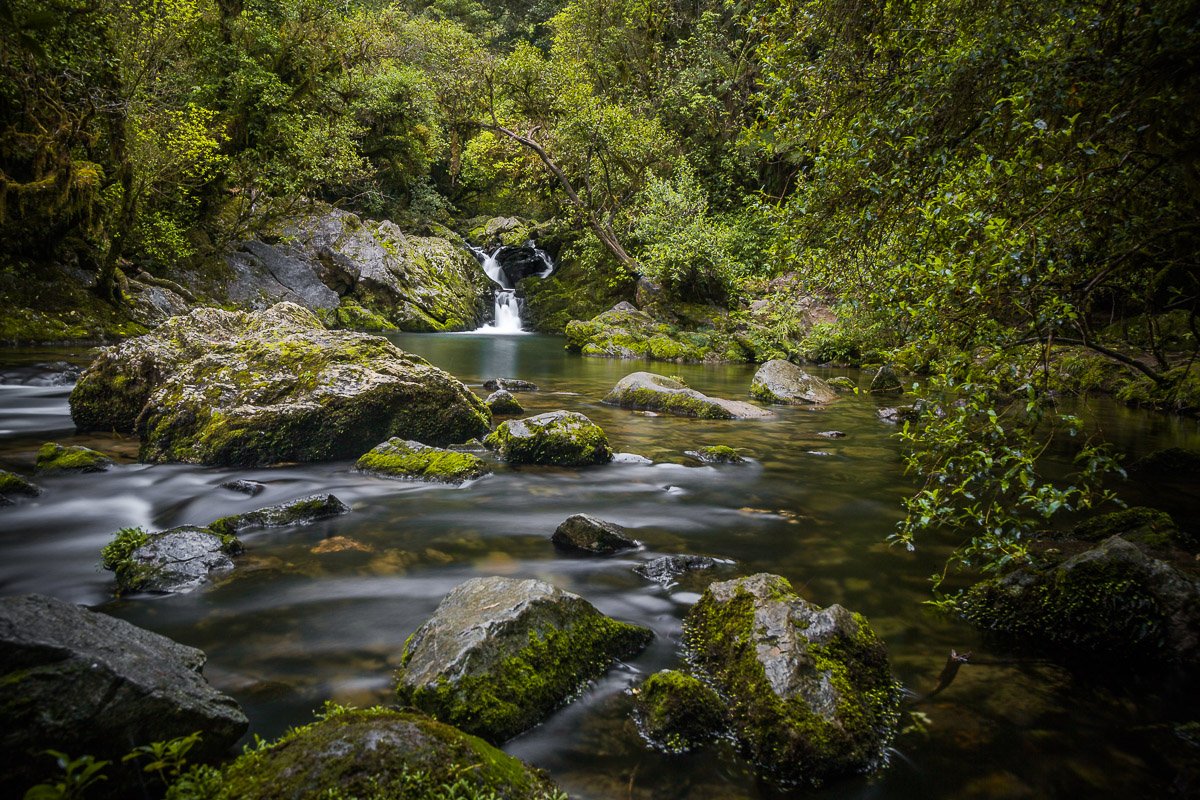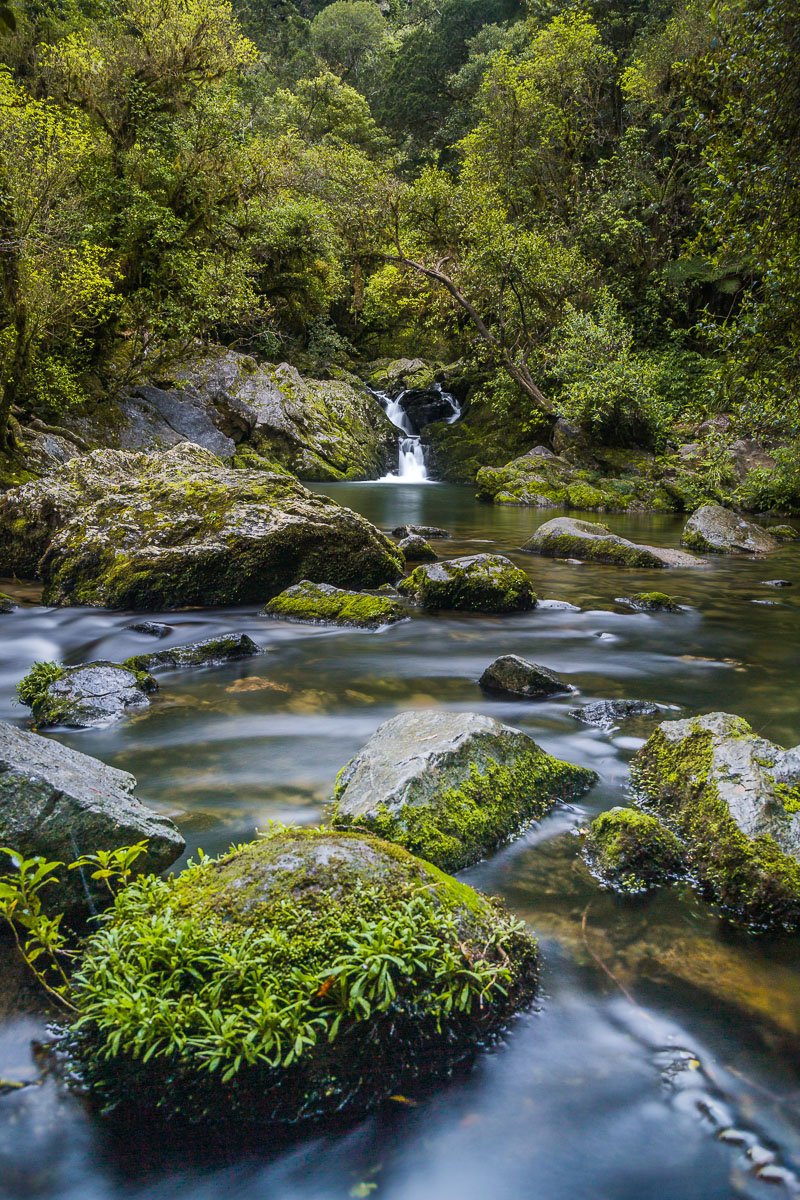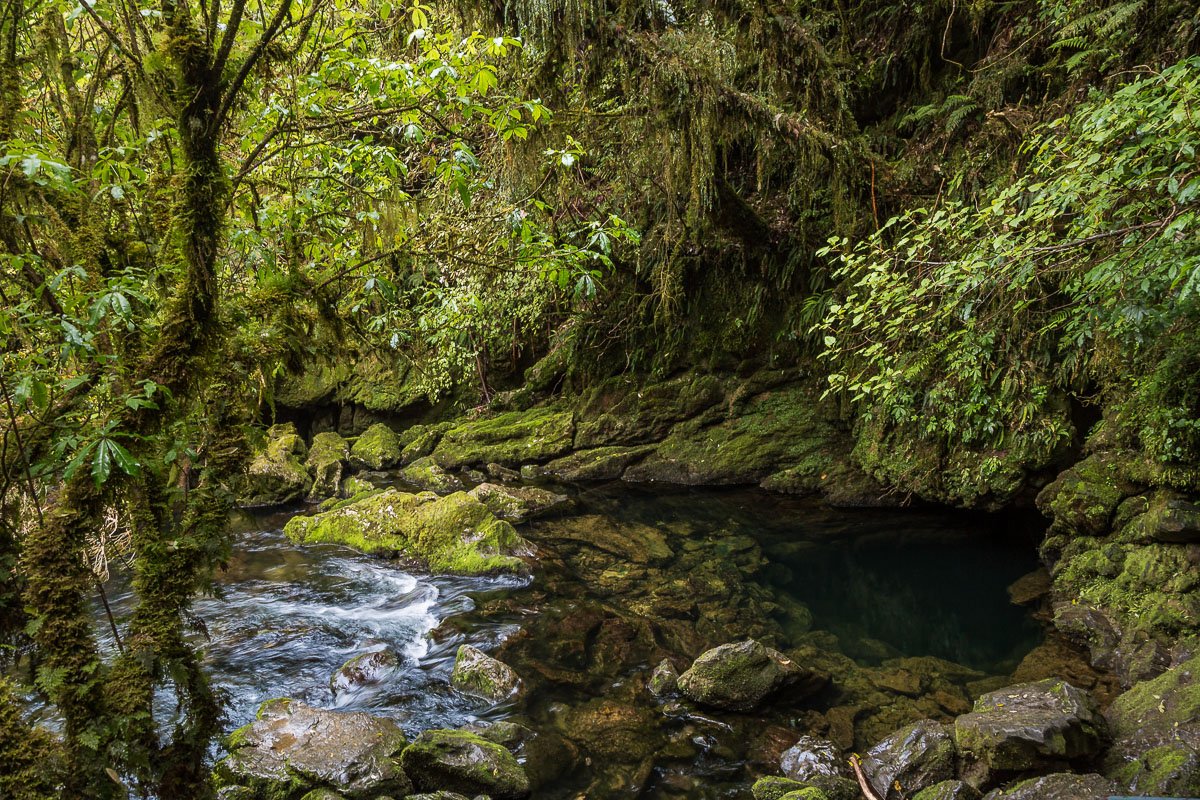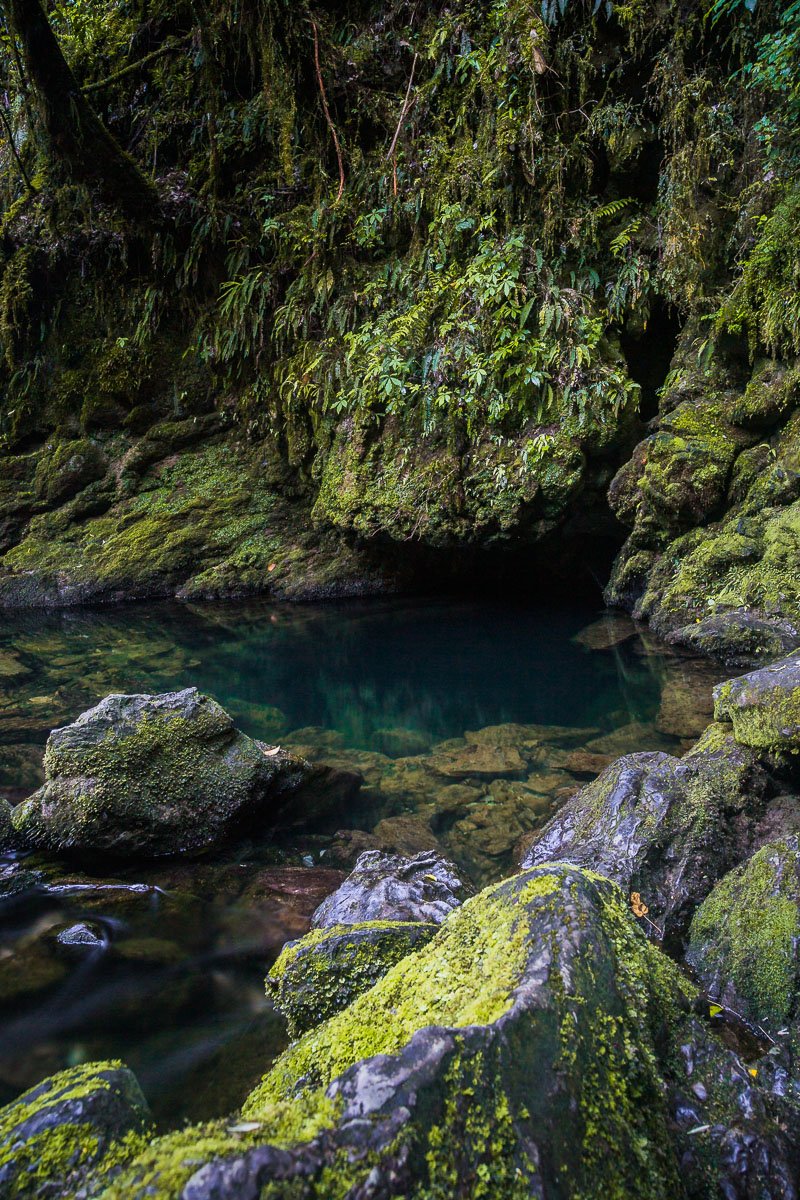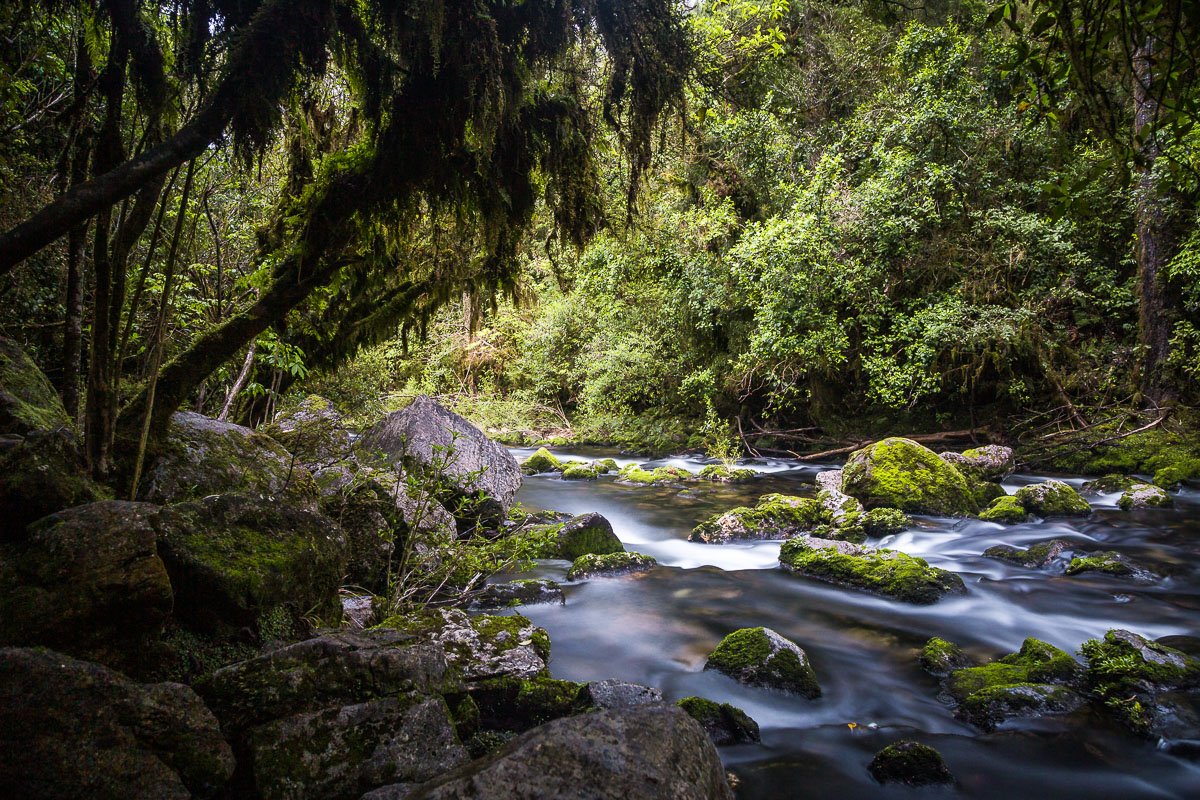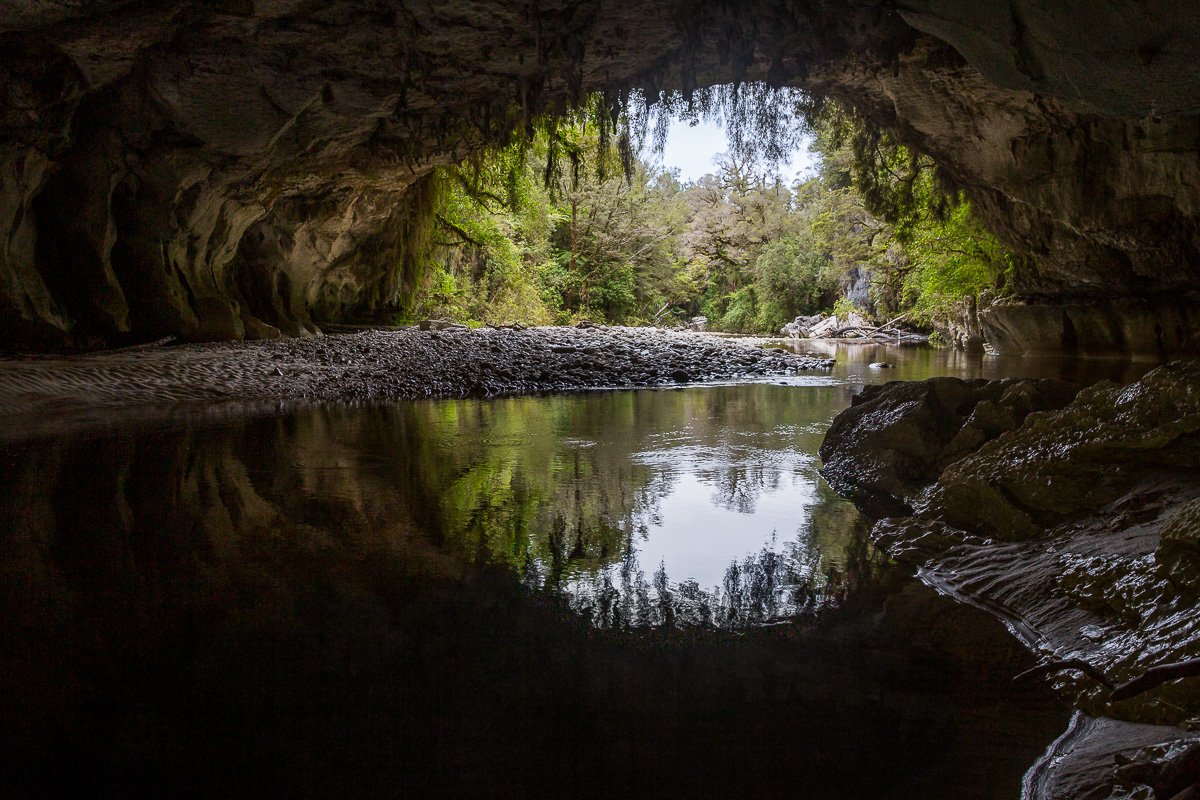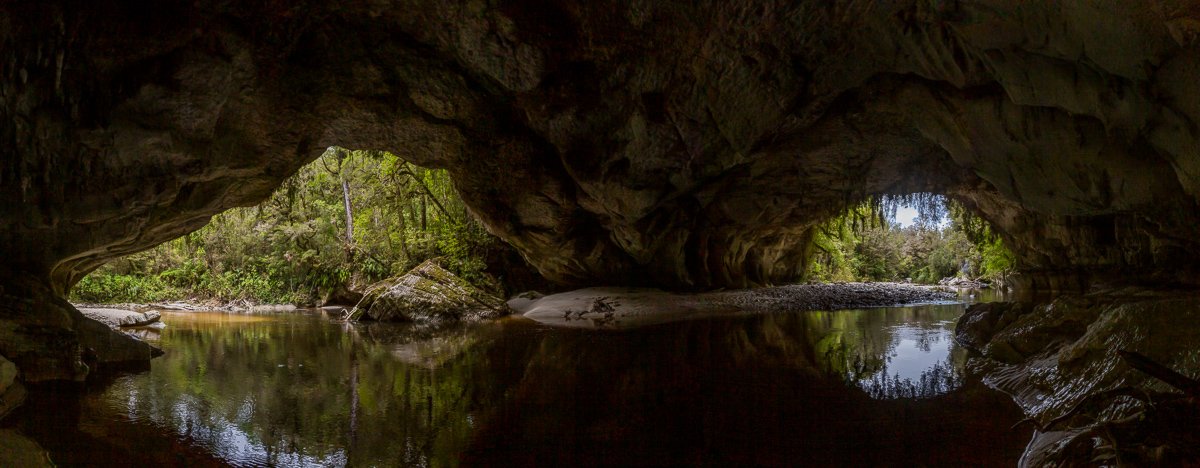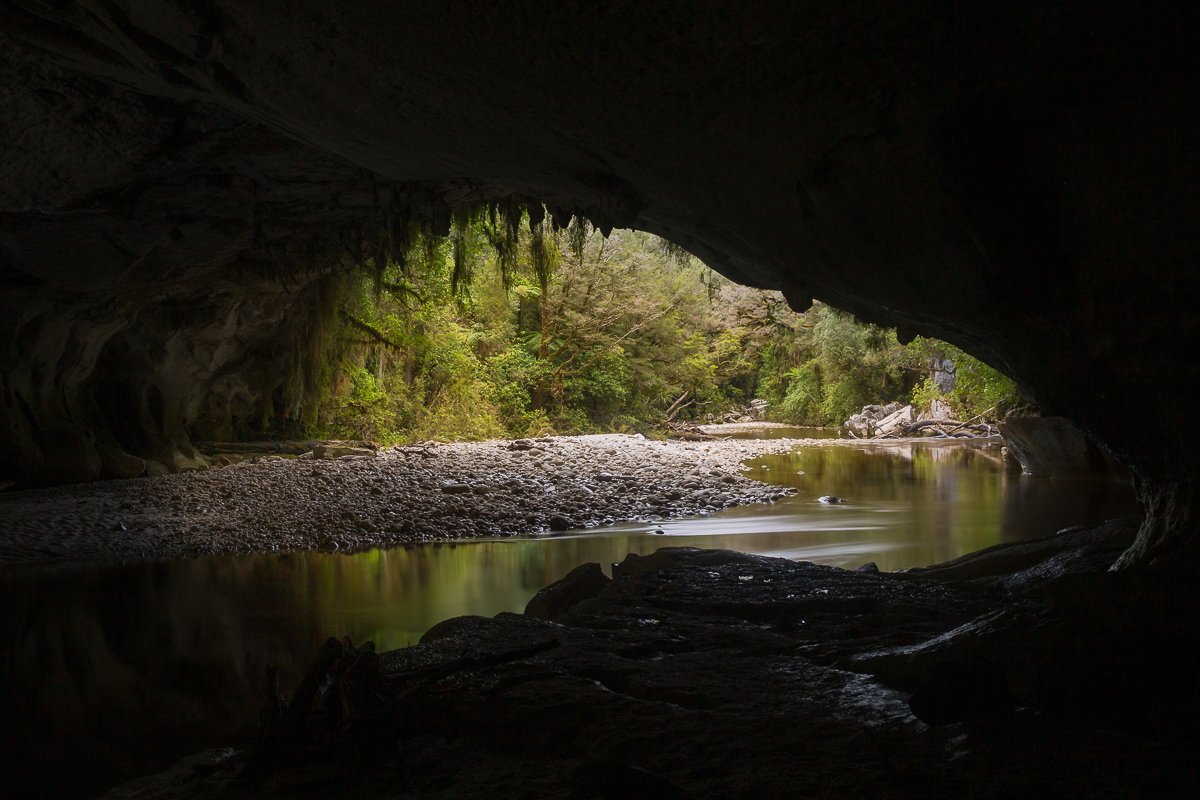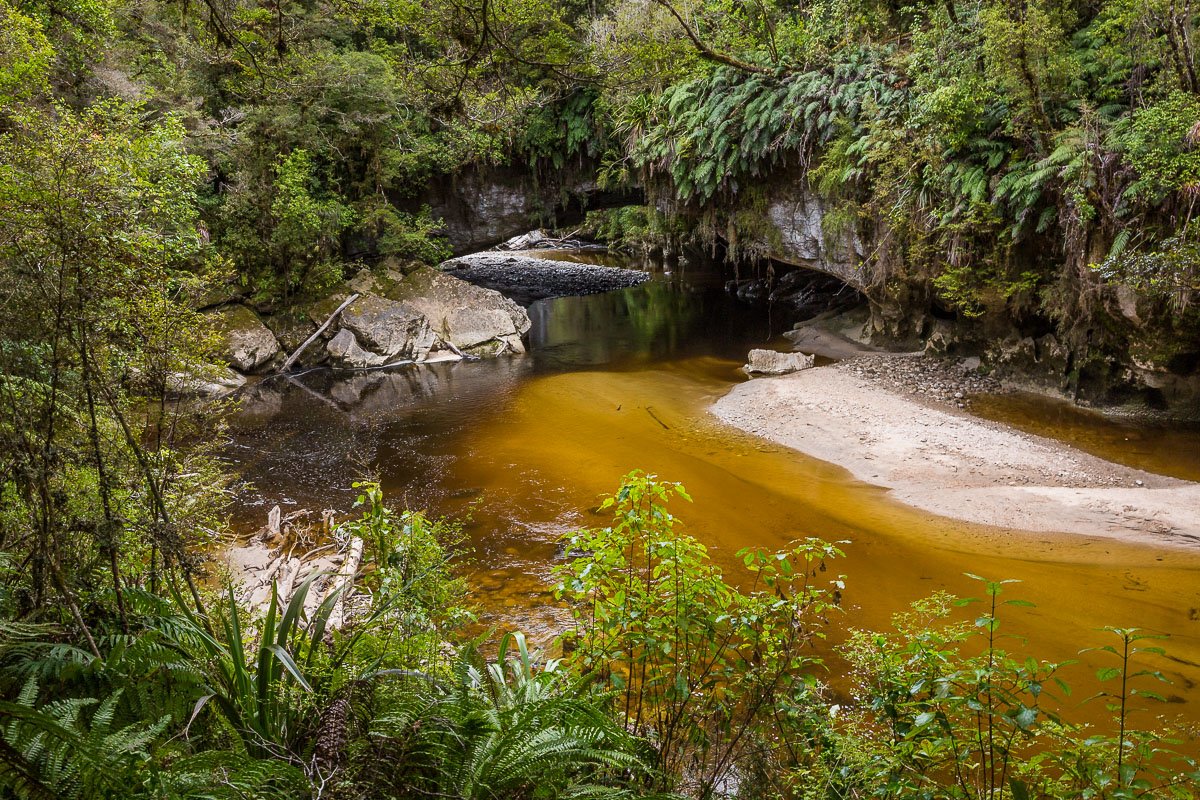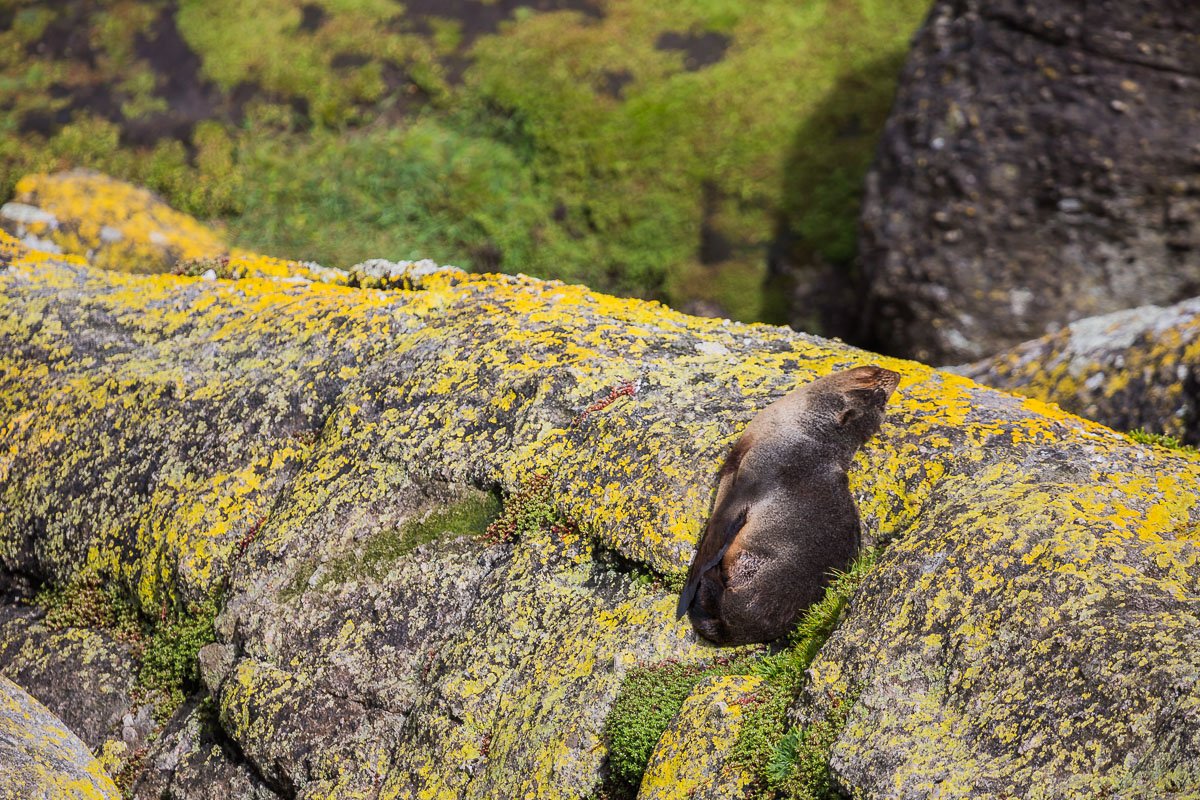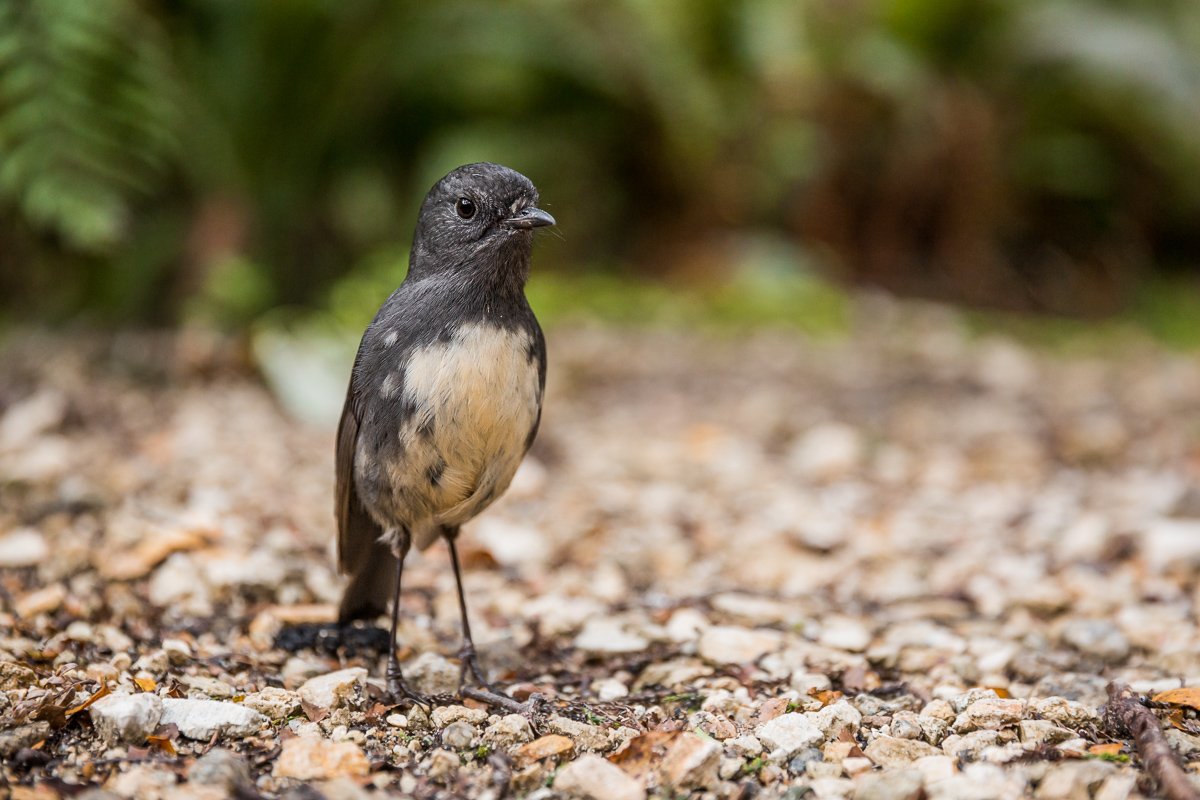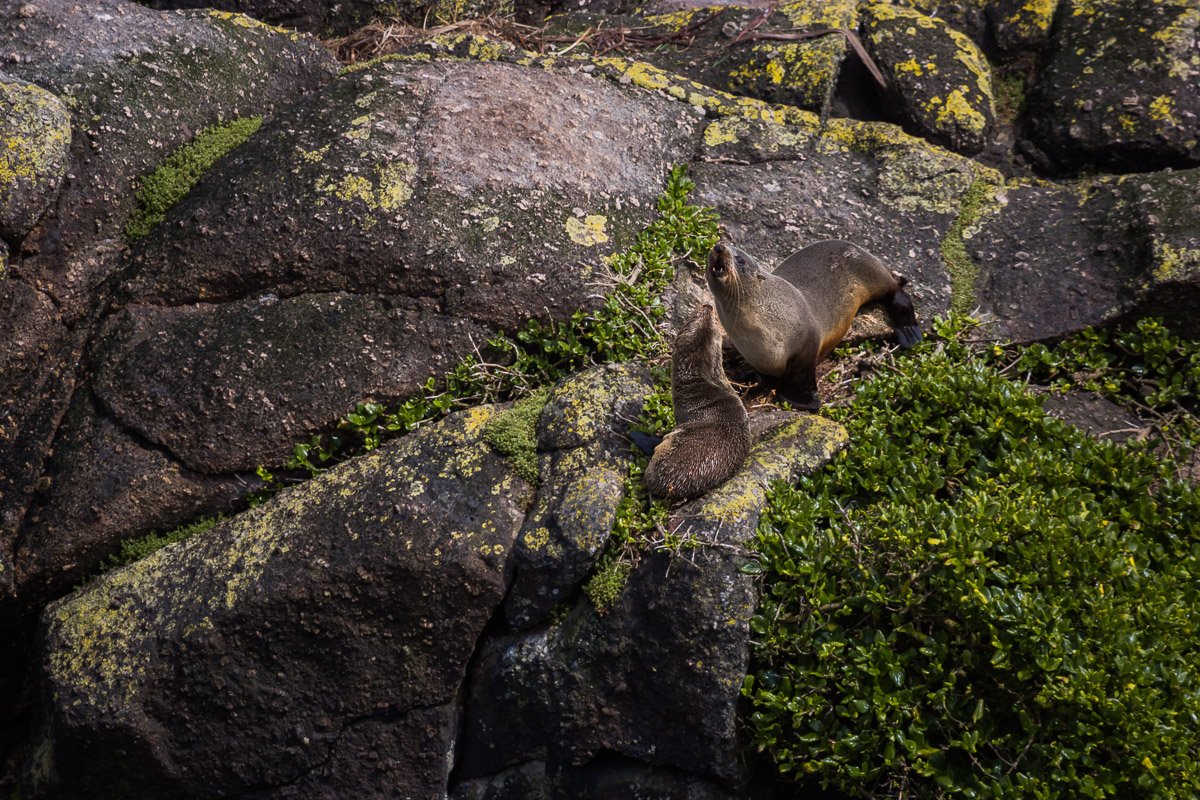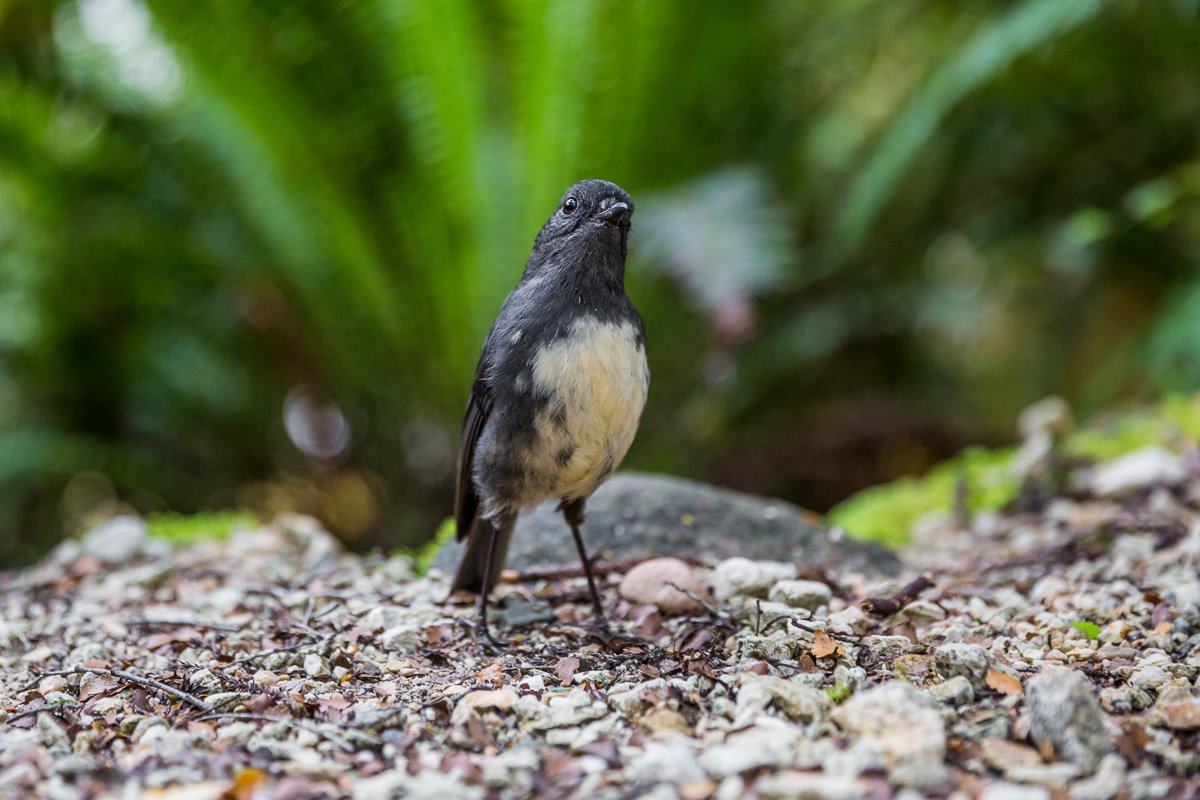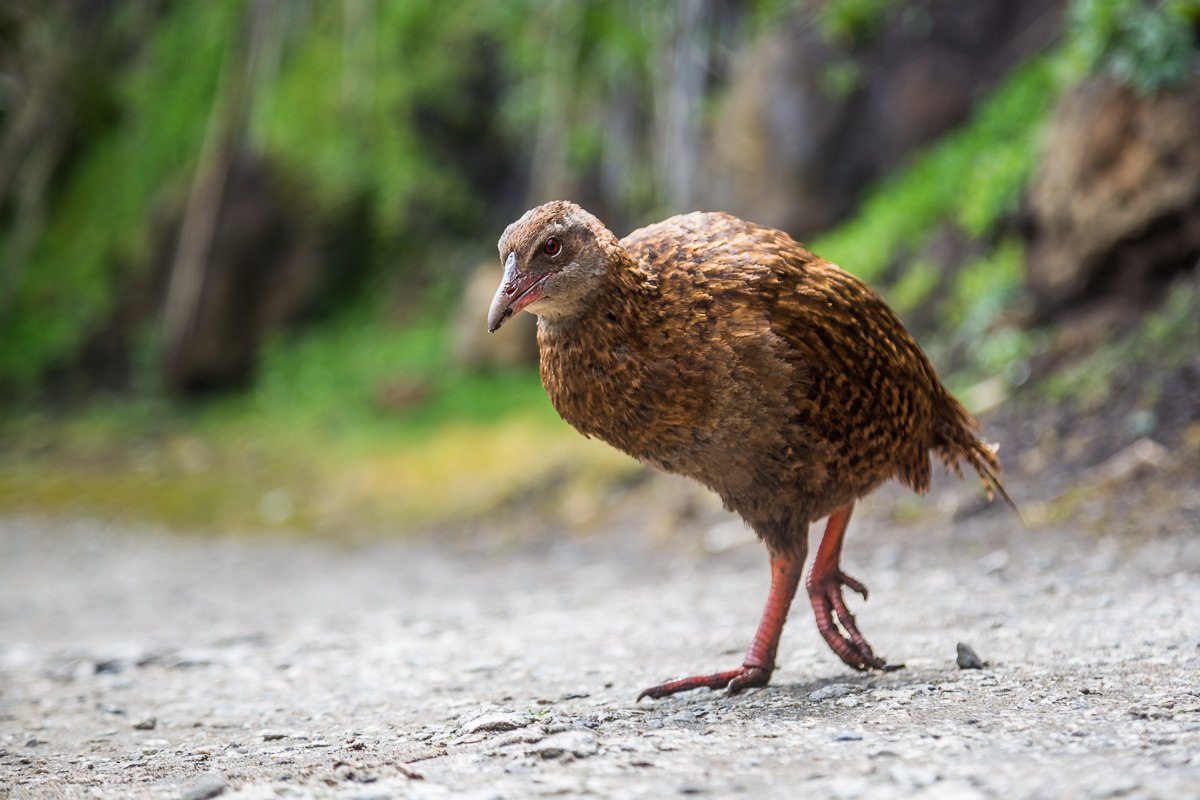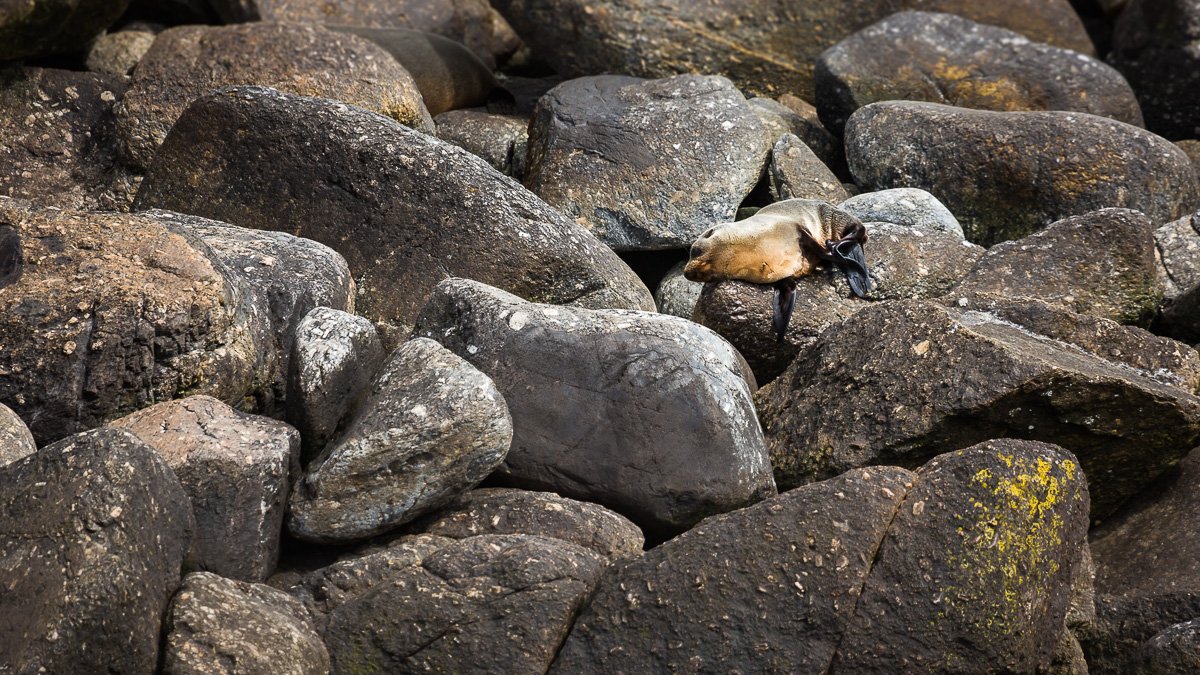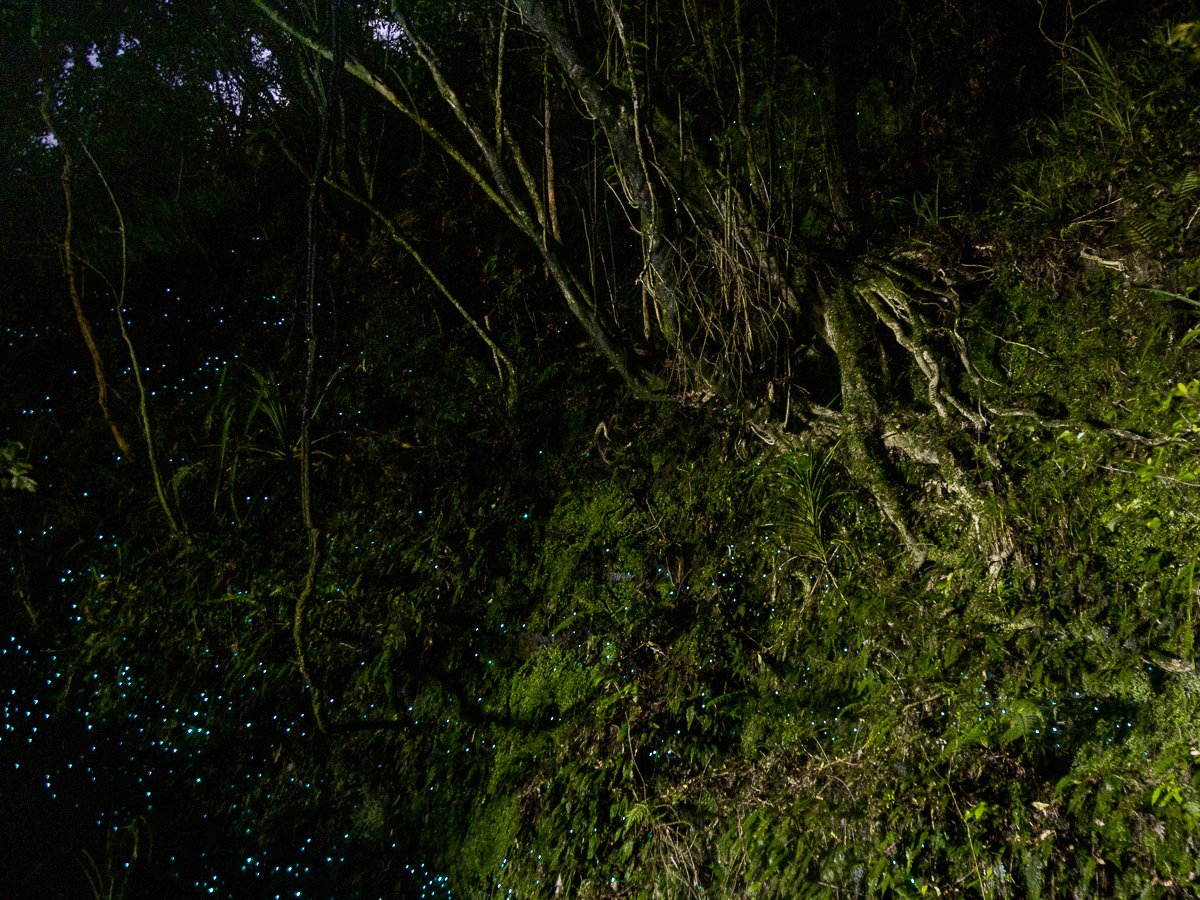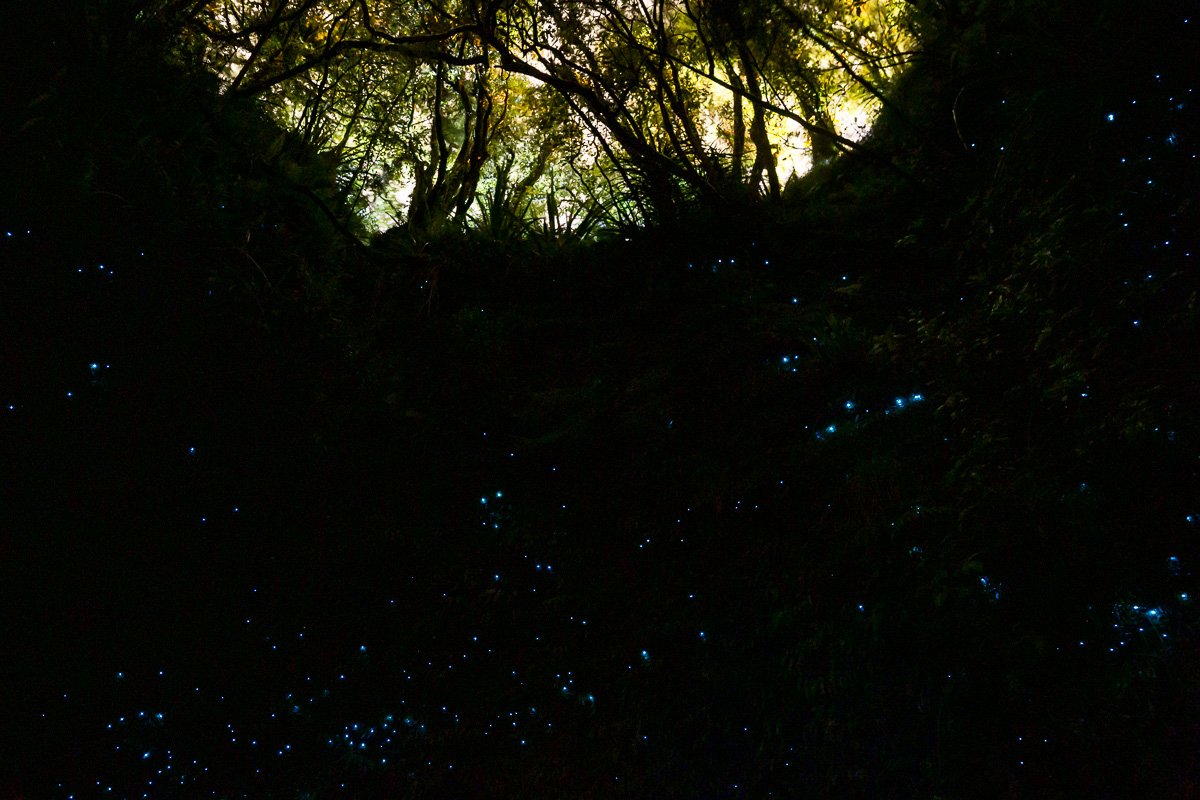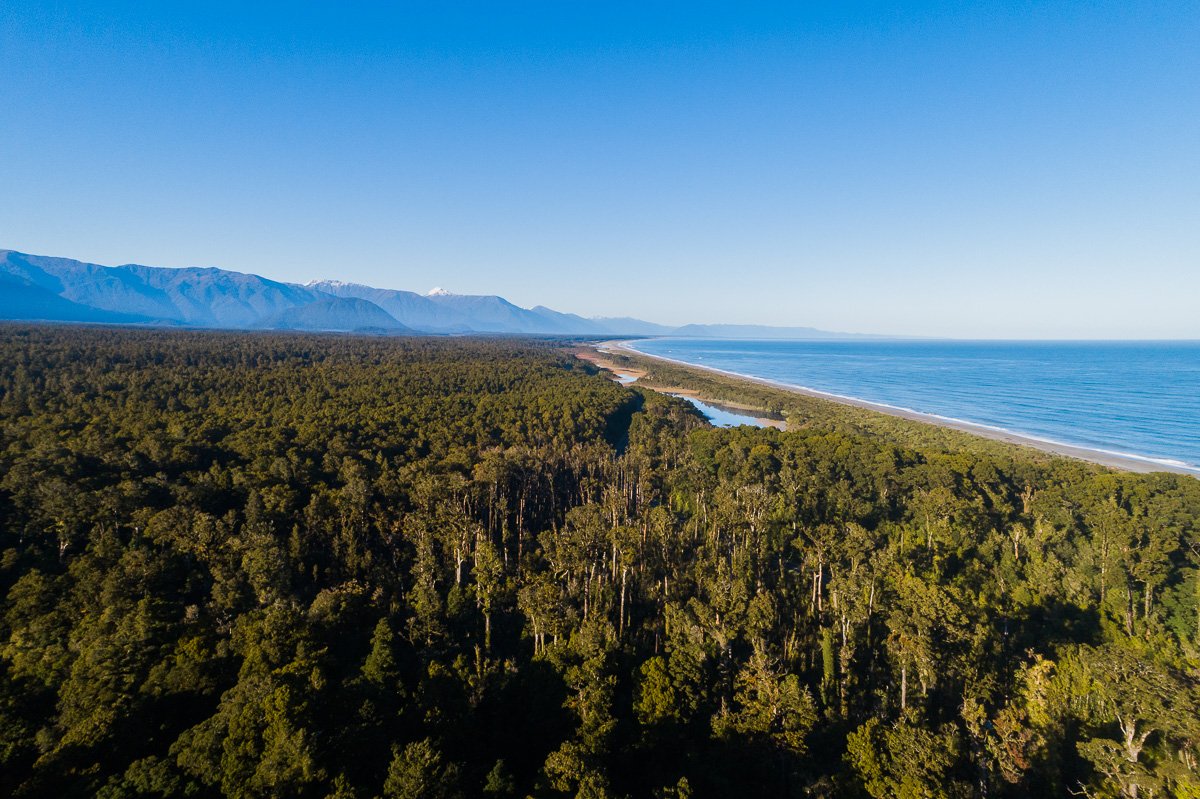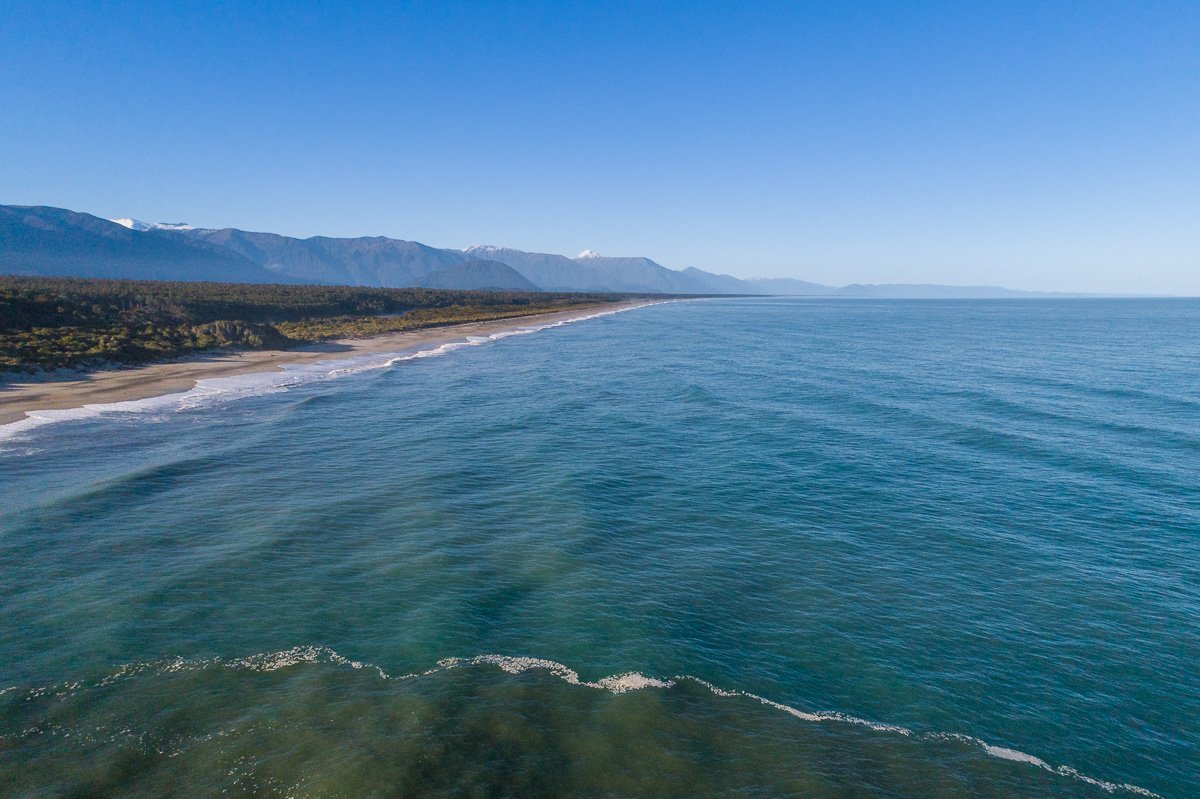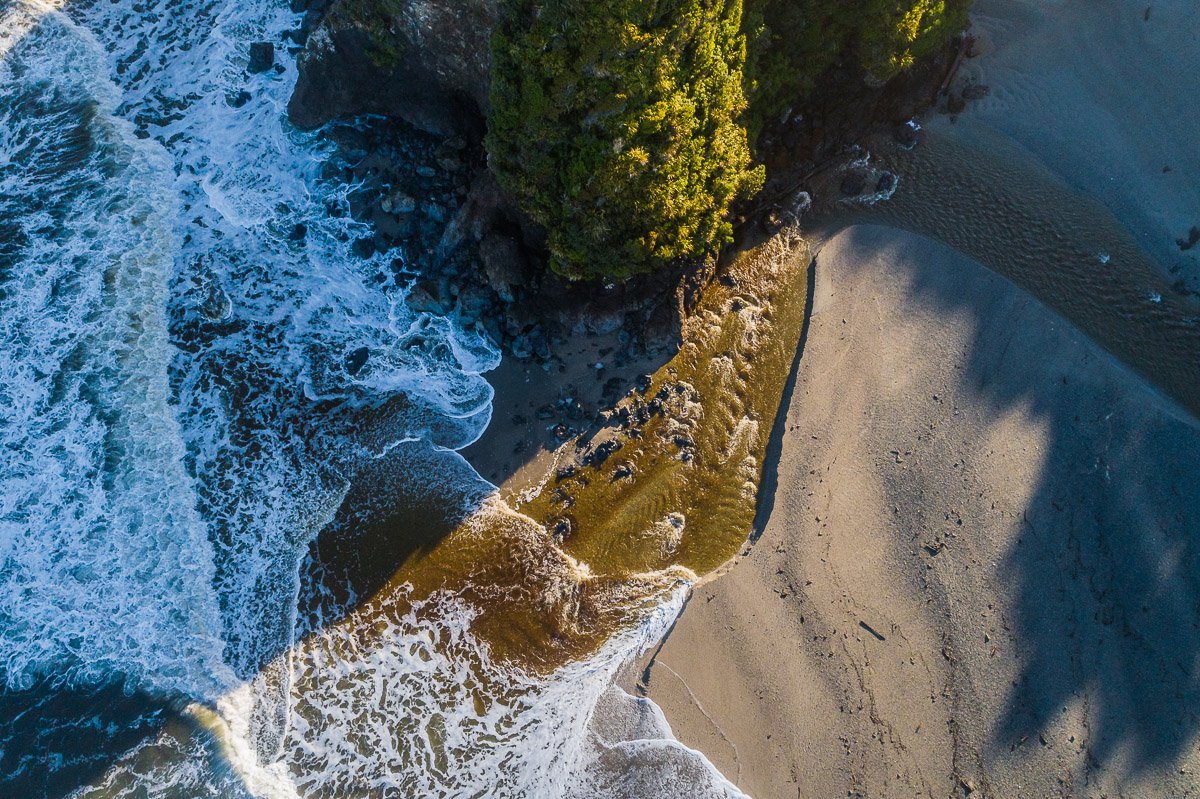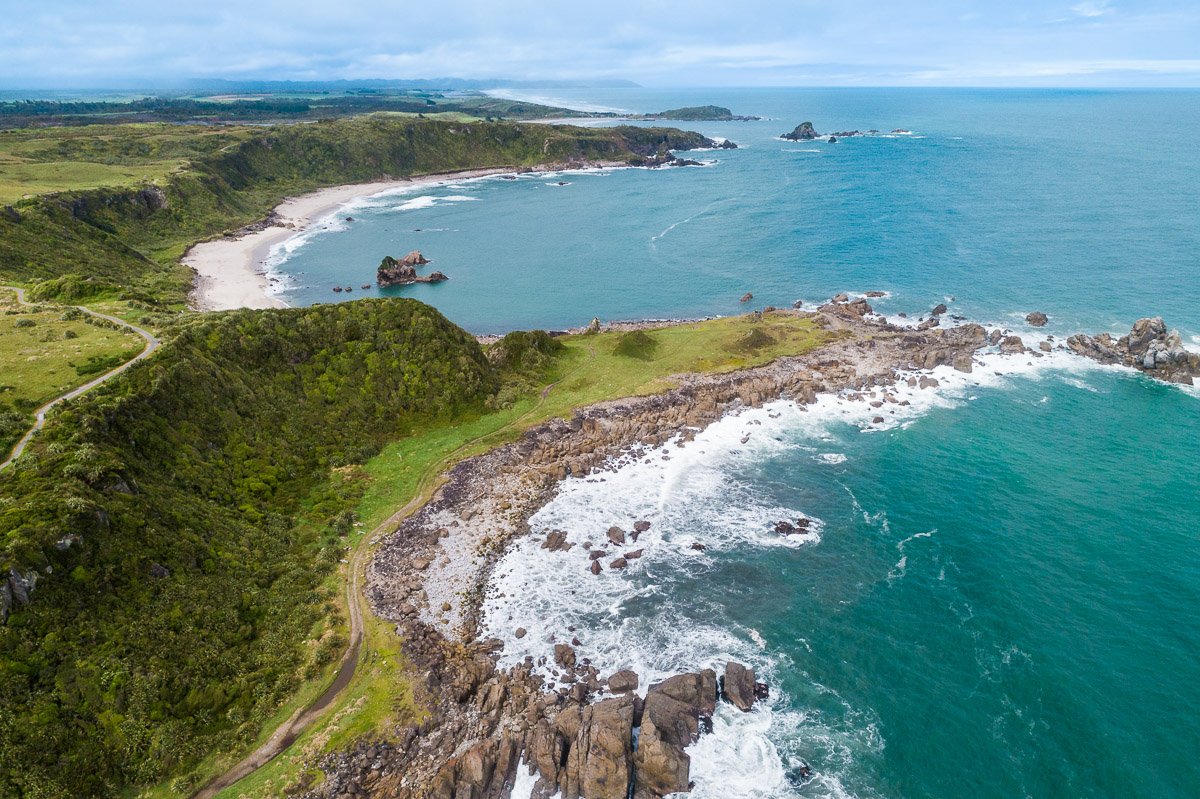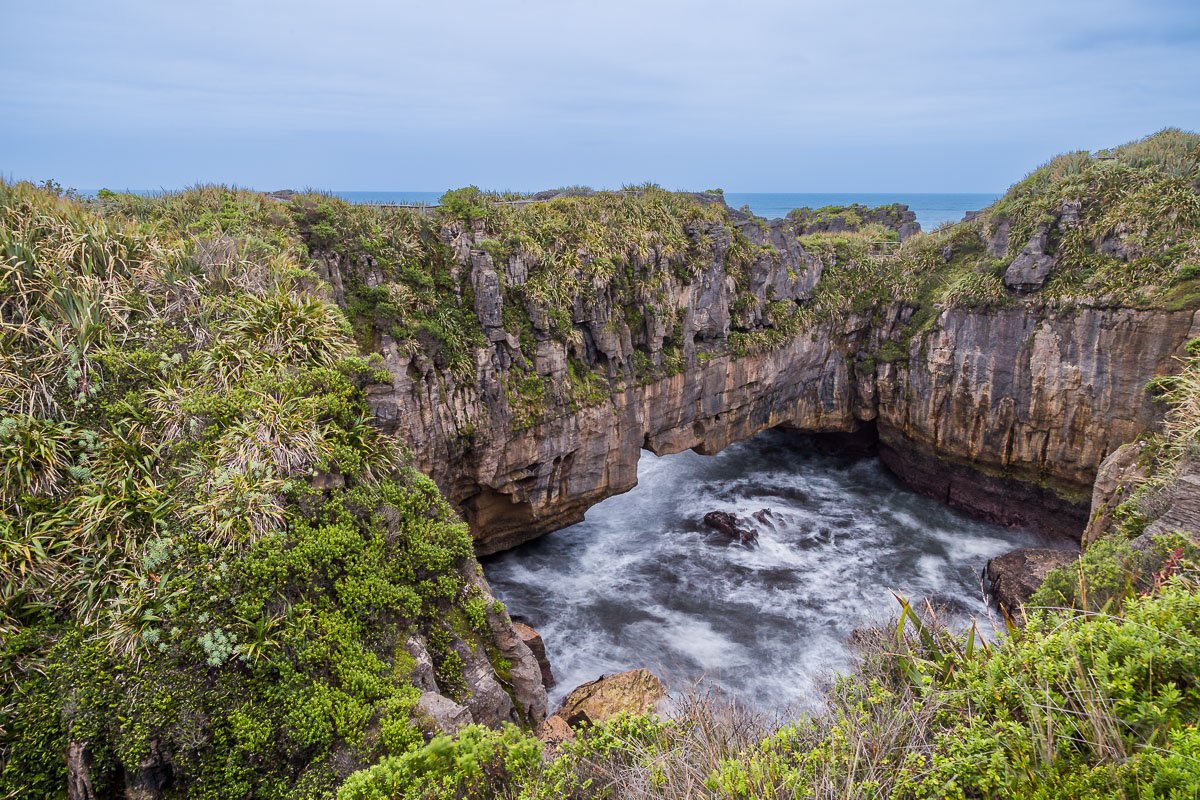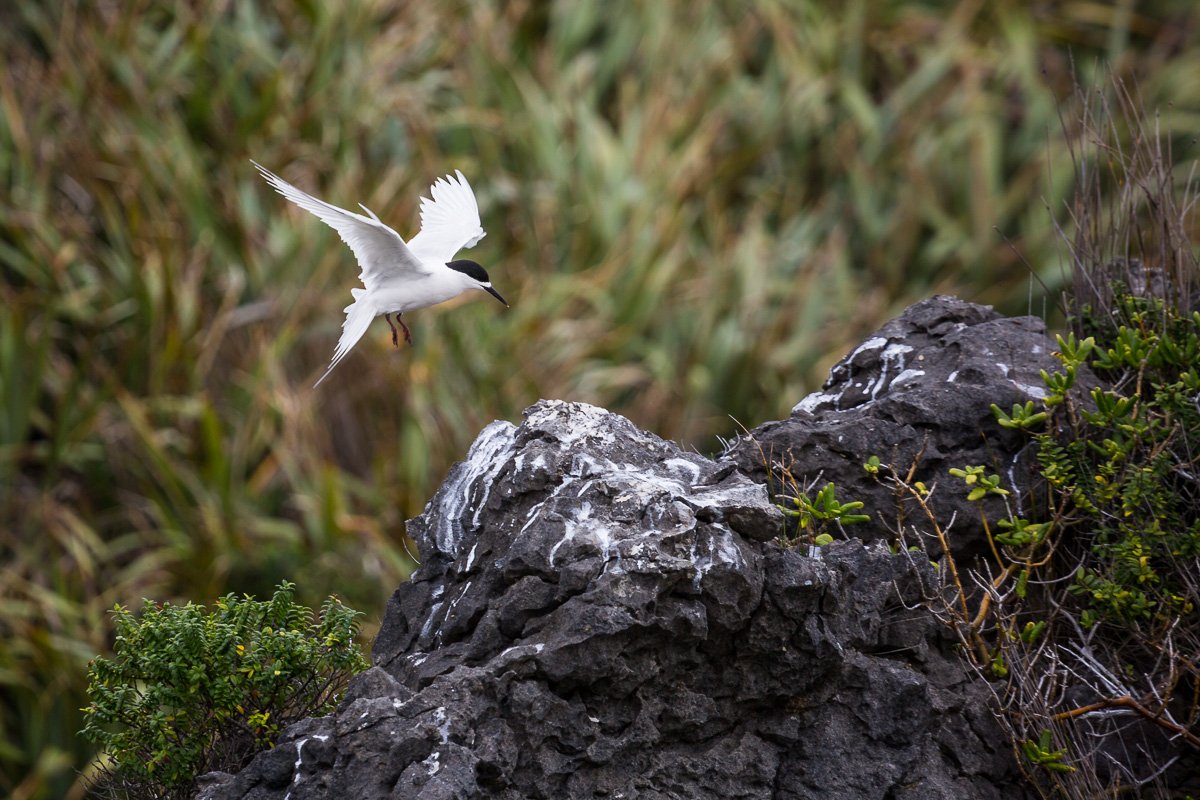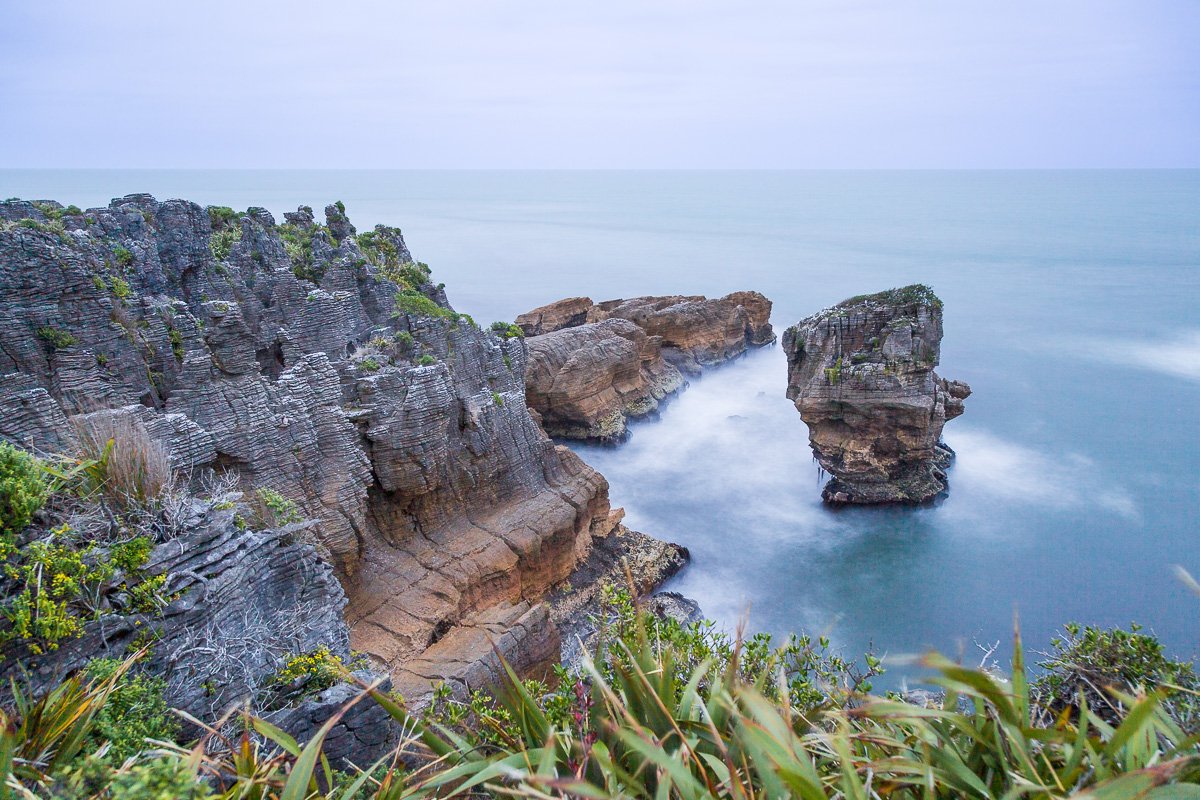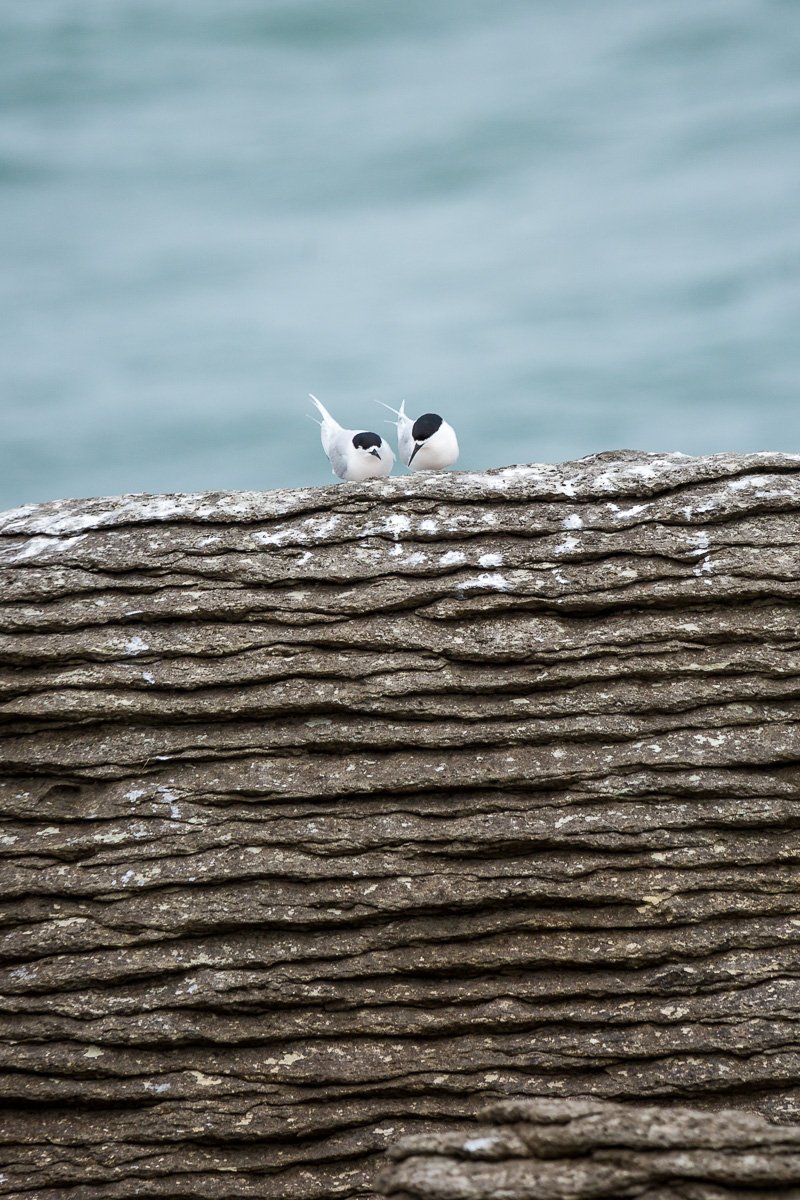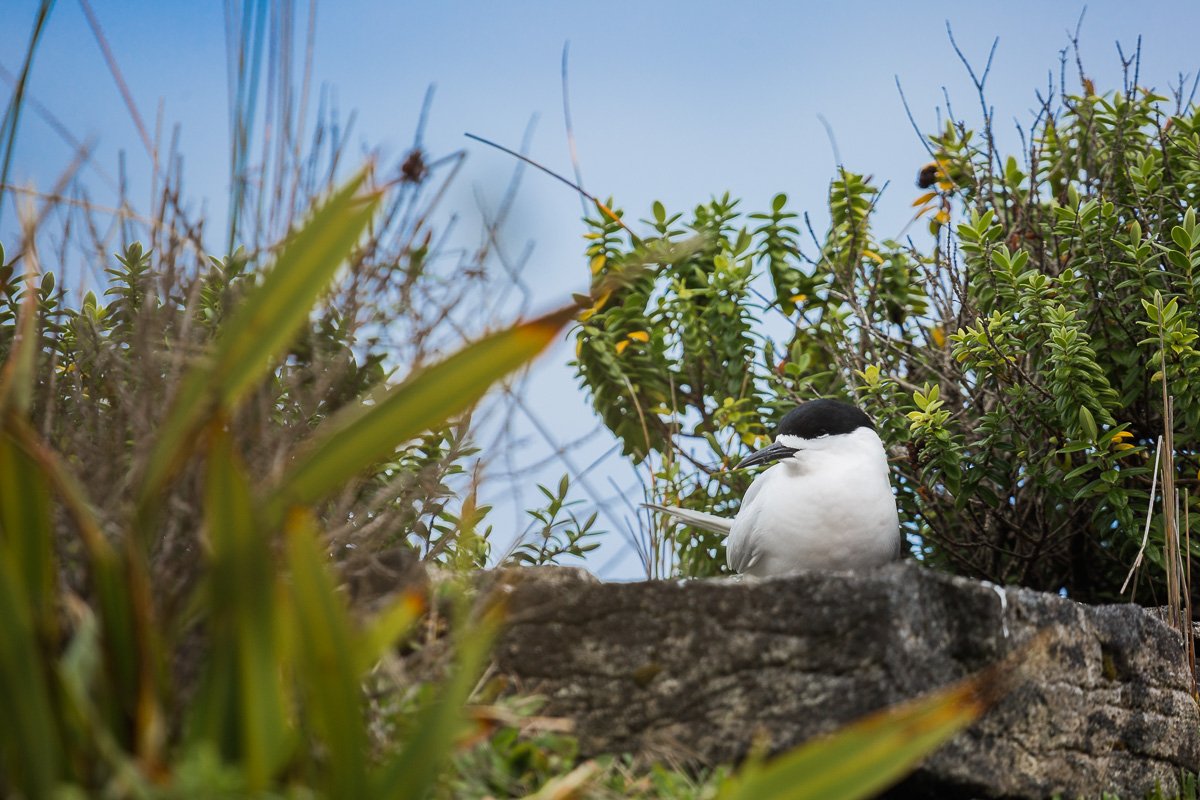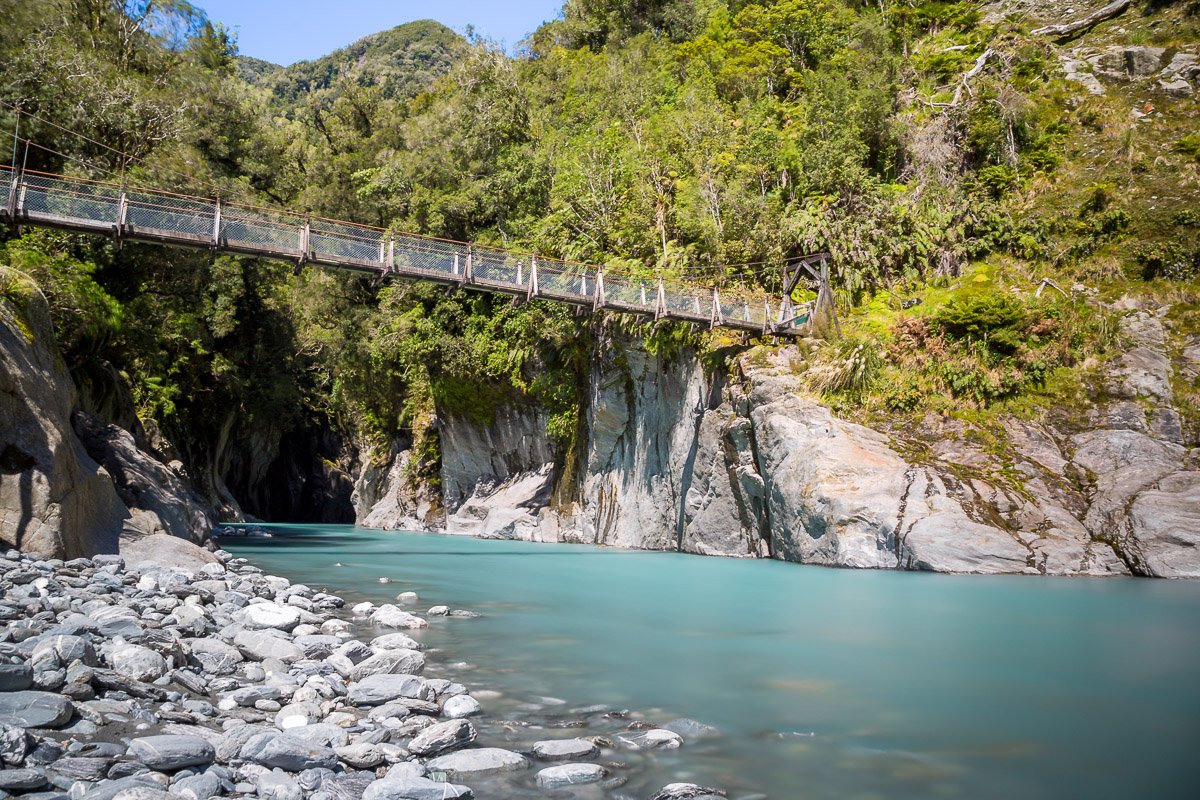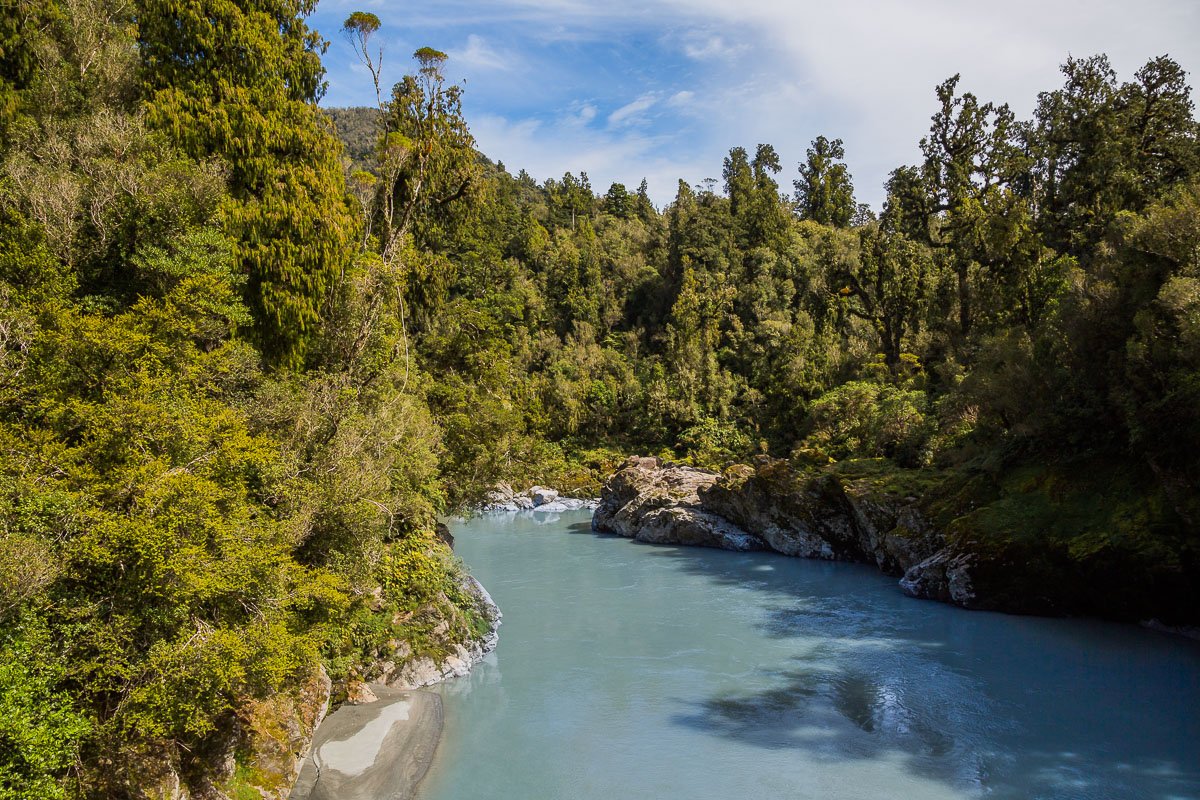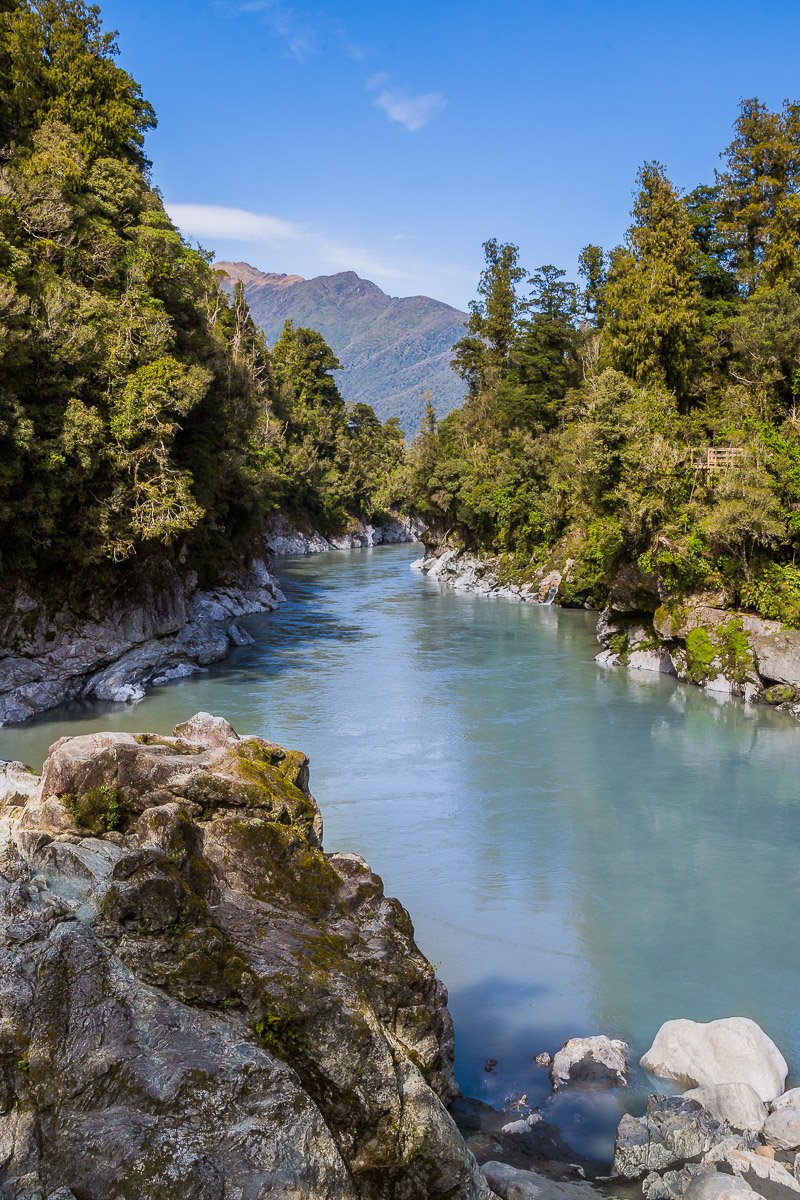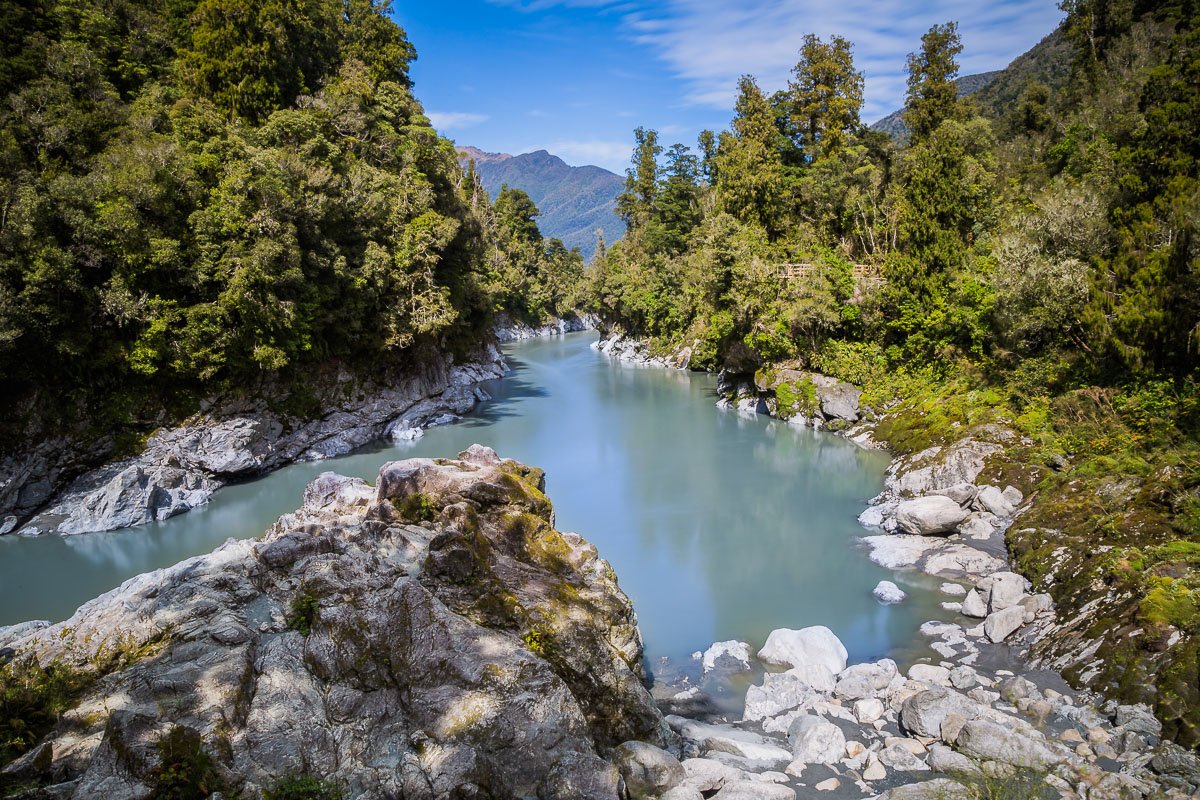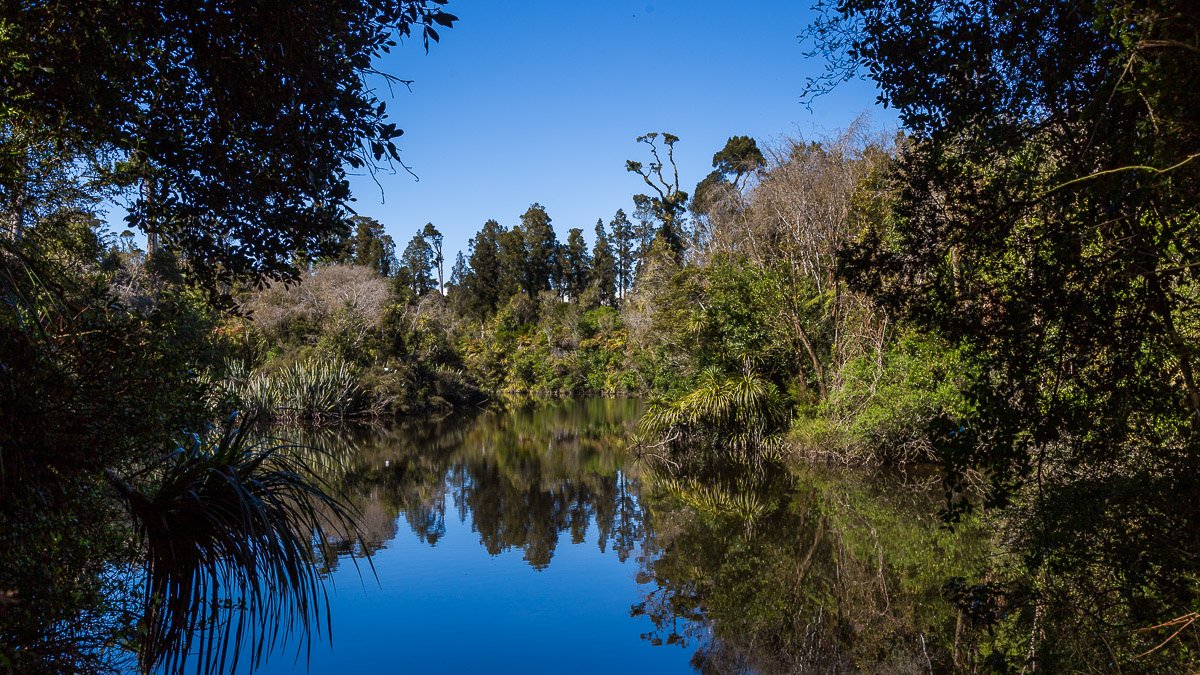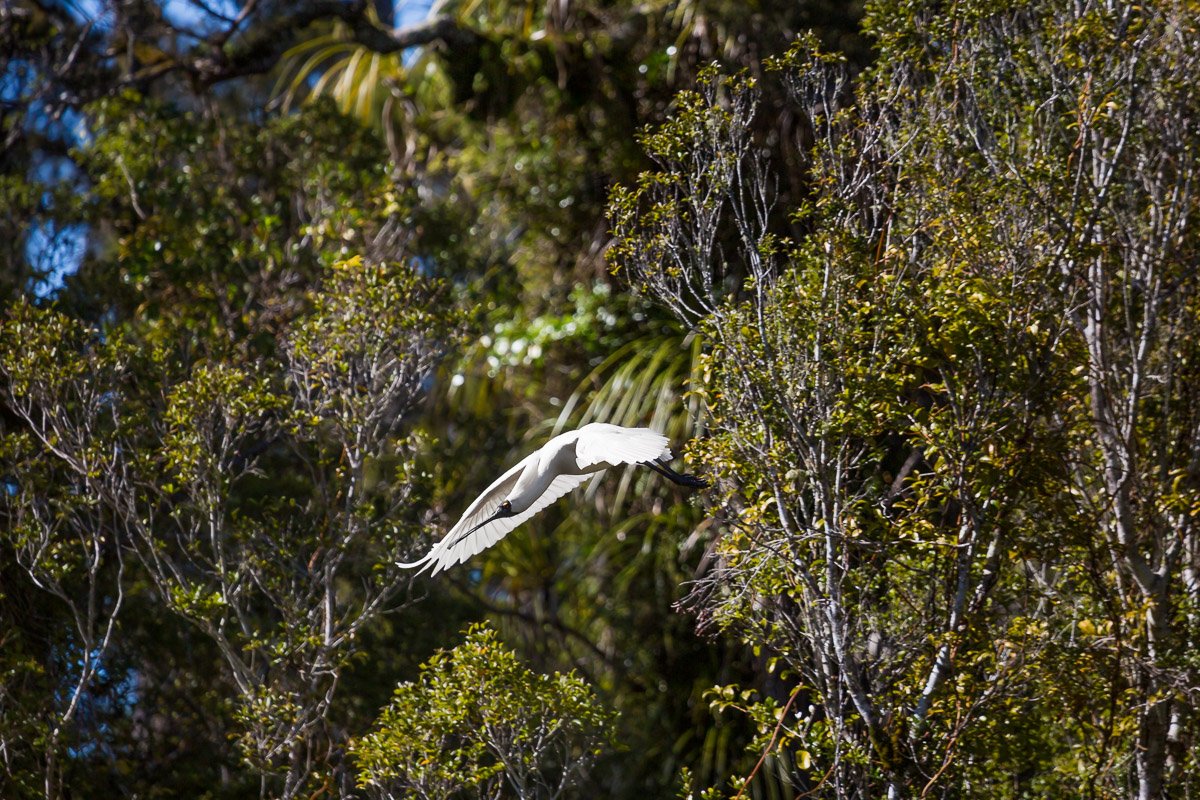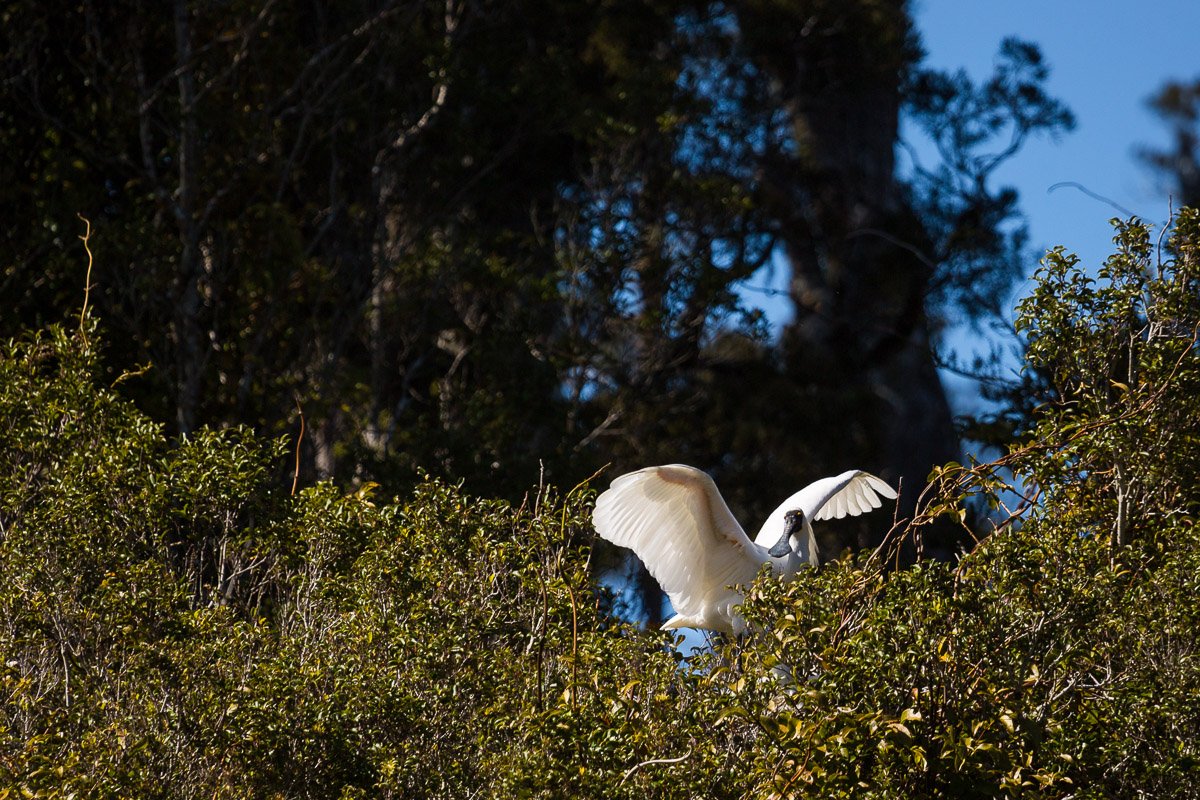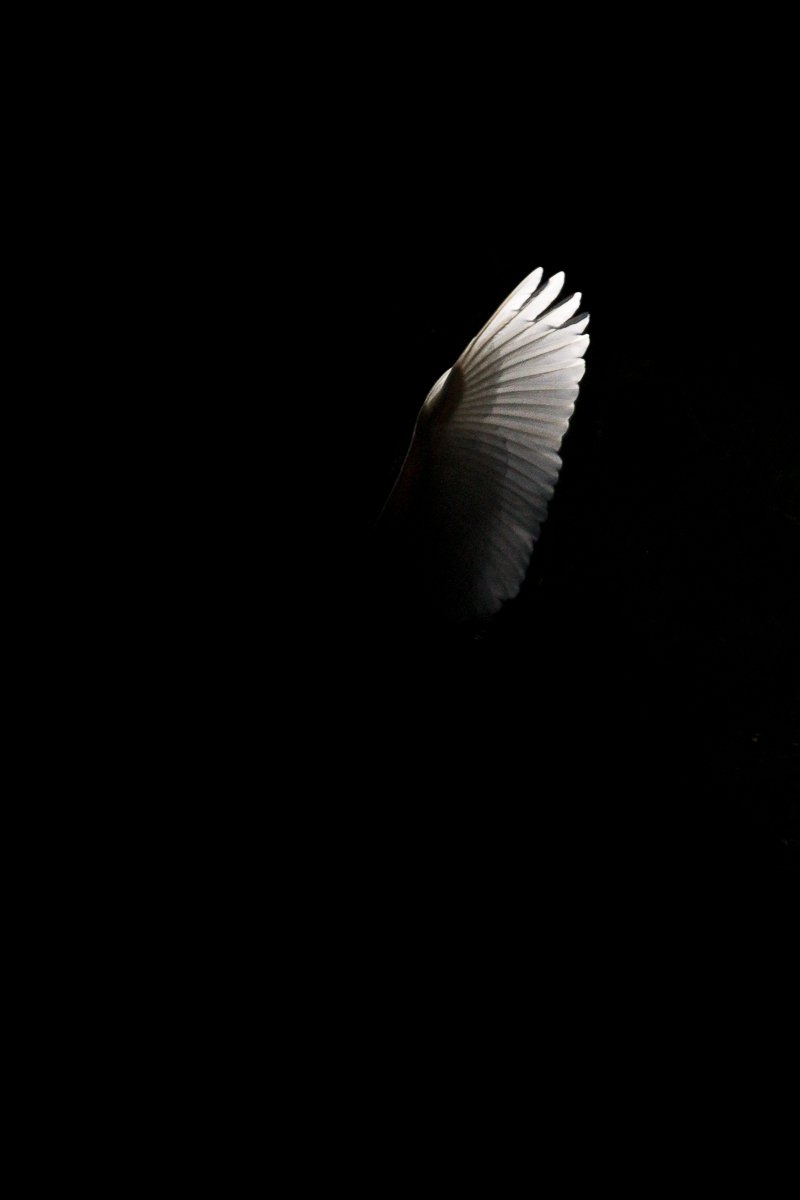Don’t be fooled by the images - the Wainui Falls on the West Coast of New Zealand are actually surprisingly challenging to photograph. The waterfall is so powerful at its full potential that you have only a few seconds to take a photo before the front of the lens is drenched! This was the perfect walk for a slightly overcast day, which left an even light on the water and surrounding landscape.
west coast
Inside Ngarua Cave
The Ngarua Cave on New Zealand’s West Coast is one of the few artificially-lighted caves in the country, and one of even fewer that allow photography. The tour is certainly worth it, as it takes visitors through the cave while learning about both its geography and history. Inside the cave, you can even see the bones of now-extinct Moa birds that fell to their deaths through the sink holes leading into the cave.
Riuwaka Resurgence
The waters of the Riuwaka River are sacred to the native Māori people of New Zealand, as they are thought to have healing properties. The most picturesque part of the river is the Riuwaka Resurgence at Kahurangi National Park, where it flows from an underwater spring to form a number of rapids and small waterfalls. As with many such places on the West Coast, this is lesser-known spot that offers a peaceful escape from the more popular tourist destinations. A place for contemplating, relaxing, and enjoying the sounds of nature.
The Caves of Karamea
The Oparara Basin Arches require a considerable detour to reach: they are at the very top of the West Coast region, near the town of Karamea. Despite the long drive, this is a truly must-see for every photographer visiting the South Island of New Zealand. The caves naturally frame the reflections of the surrounding landscape in the water, lending themselves to iconic images. I spent several hours at this location, enjoying the complete silence of nature afforded by their isolation, and the majesty of these geological formations.
West Coast Wildlife
New Zealand’s West Coast is full of opportunities to observe the local wildlife - from the friendly South Island robins and curious weka, to crowded colonies of New Zealand fur seals. In this blog post, I have gathered only a few of my images of the fauna that inhabit this special corner of Aotearoa.
Stars From The Underground
As night falls and darkness covers the land, the New Zealand landscape comes to light. I’m not referring to the stars in the skies of Aotearoa, but to their invertebrate counterparts. Glow worms such as these are abundant in many caves and dells across the country, shining bright to lure their prey. Their bioluminescence is the effect of a chemical reaction where luciferin is combined with oxygen to produce a mesmerizing blue glow...
The West Coast from Above
A bird's-eye view always reveals a different perspective on the landscape and brings out the true scale of the place. I had a few opportunities for aerial photography during my road trip through the West Coast of New Zealand, and I think these images really show off the untamed beauty of the region. The images below were taken near Tauparikākā Marine Reserve and Cape Foulwind.
Pancake Rocks and Their Inhabitants
These rock formations in New Zealand’s West Coast are, of course, named after their looks - they look like stacked rounded layers somewhat resembling pancakes. Pancake Rocks even boasts a suitably-themed pancake-serving café near the entrance to the park. I visited on a stormy evening and, although the weather left much to be desired, the white-fronted terns (Sterna striata) that inhabit this location more than made up for the moody skies.
Glacial Blue Waters
Glaciers are not only stunning in and of themselves, but also offer an additional feature to the surrounding landscapes: glacial water. Due to the sediments contained in it, glacial rivers and gorges are of a unique turquoise colour. There are plenty of opportunities to see such places in the South Island of New Zealand, and especially on the West Coast. Today, I share some of my favourite images from Callery Gorge Walk and Hokitika Gorge, two truly stunning locations near the Franz Josef and Fox Glaciers.
Royalty of the Wetlands
Rare as they are, even in their full breeding plumage, I’m afraid White Herons still can’t compete with Royal Spoonbills (Platalea regia) in my books. It’s a matter of personal opinion, of course, but to me these enormous birds are the uncontested kings and queens of the wetlands. I thoroughly enjoyed photographing these avian giants swooping between their nesting sites, and occasionally fighting each other, during our birdwatching tour with White Heron Sanctuary Tours.

